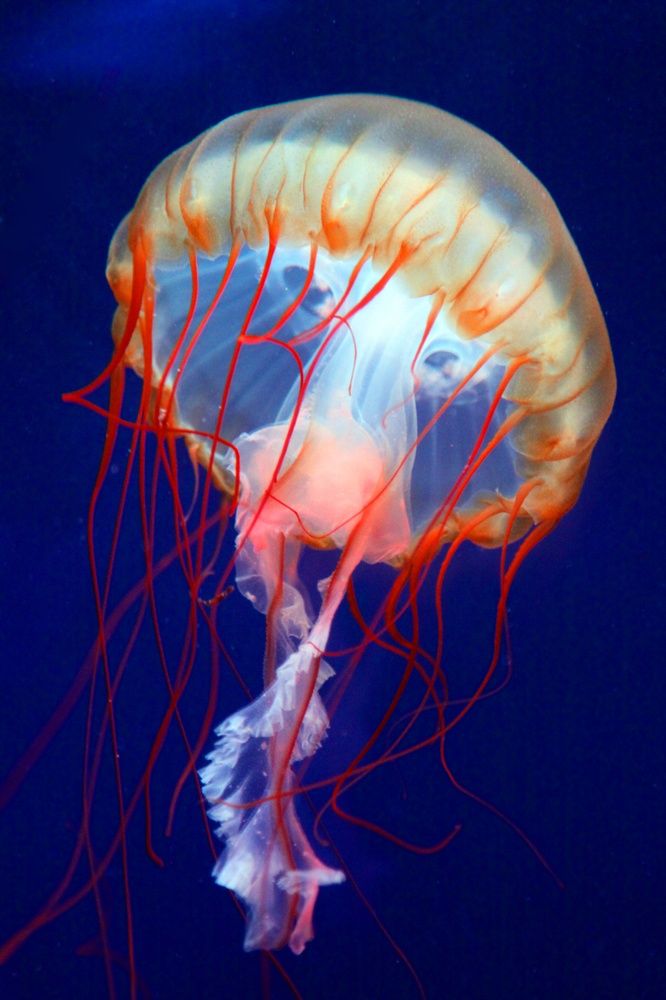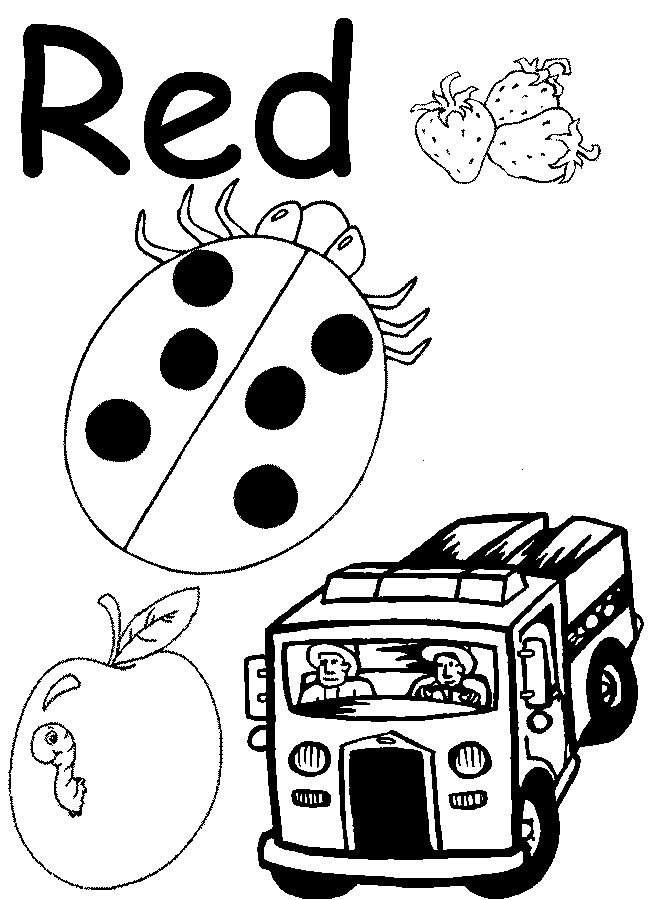Jelly fish jellyfish
SCDNR - Jelly fish
Jellyfish Information
- Food
- Glossary
- Life Cycles
- Local Jellyfish
- Locomotion
- Prevention
- Treatment of Sting
- Saltwater Fishing Conservation & Ethics
- Venom Apparatus
Few marine creatures are as mysterious and intimidating as jellyfish. Though easily recognized, these animals are often misunderstood and feared by beach goers, even though most jellyfish in South Carolina waters are harmless. This publication will help coastal residents and vacationers learn which jellyfish to avoid, and the ones you can safely ignore.
Jellyfish belong to a large group of marine animals that include attaching organisms such as sea anemones, sea whips, corals and hydroids that grow attached to rocks or other hard surfaces. Jellyfish and their relatives such as the Portuguese man-of-war are mobile, either actively swimming or pushed by winds and currents.
Both stationary and mobile members of this group have radial symmetry with body parts radiating from a central axis. This allows jellyfish to detect and respond to food or danger from any direction.
Jellyfish have an outer layer which covers the external body surface, and an inner layer which lines the gut. In between is a layer of thick elastic jellylike substance called mesoglea or middle jelly.
Jellyfish have a simple digestive cavity with four to eight oral arms near the mouth. These arms transport food captured by the tentacles into the mouth.
Lacking a brain, jellyfish instead have a elementary nerve net capable of detecting light, odor and other stimuli and coordinating the animal’s responses.
Jellyfish exist in many sizes, shapes and colors. Most are somewhat transparent or glassy, with a bell shape. The bell may be less than an inch across or more than a foot across. A few species reach seven feet in diameter. The tentacles of some jellyfish grow to more than 100 feet long.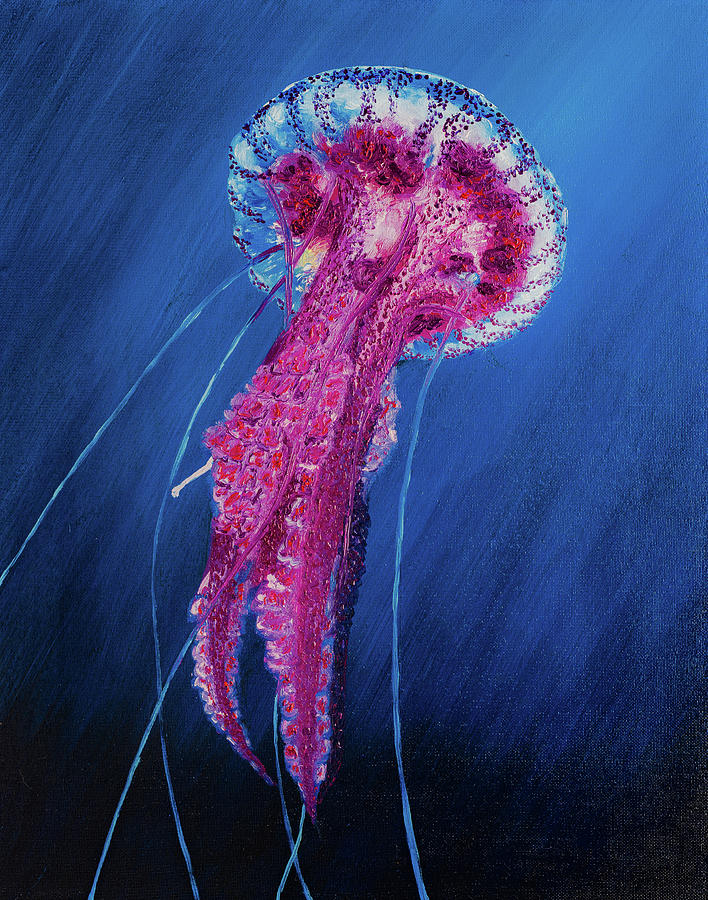 Regardless of their size or shape, most jellyfish are very fragile, consisting mostly of water.
Regardless of their size or shape, most jellyfish are very fragile, consisting mostly of water.
Jellyfish inhabit all the world's oceans and can withstand a wide range of temperatures and salinities. Most live in shallow coastal waters, but a few inhabit depths of 12,000 feet.
Life Cycles
Jellyfish have alternate generations in which the animal passes through two different body forms. They begin life as small polyps attached to solid surfaces such as rocks or shells. Using their tentacles, polyps feed on microscopic organisms in the water. Polyps can multiply by producing buds or cysts that separate from the first polyp and develop into new polyps.
When fully developed, polyps constrict in their bodies, eventually producing larvae which resemble a stack of saucers. Each individual saucer develops into a tiny jellyfish which separates itself from the stack and becomes free swimming. In a few weeks, they grow into an adult jellyfish, called a medusa.
The dominant and conspicuous medusa are either male or female.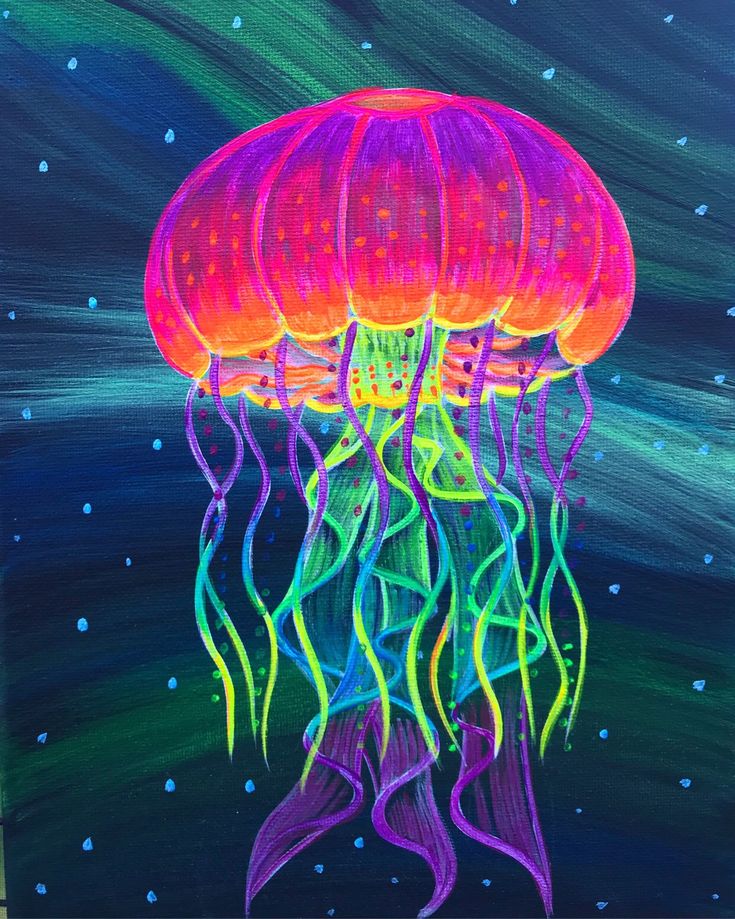 The reproductive organs (gonads) develop in the lining of the gut. During reproduction the male releases sperm into the water and the swimming sperm are swept into the female. Embryos develop either inside the female or in brood pouches along the oral arms.
The reproductive organs (gonads) develop in the lining of the gut. During reproduction the male releases sperm into the water and the swimming sperm are swept into the female. Embryos develop either inside the female or in brood pouches along the oral arms.
Eventually, small swimming larvae leave the female and enter the water column. After several days they attach themselves to something firm on the sea floor gradually transforming into flower like polyps to start the life cycle over again. Jellyfish medusae normally live for a few months; however, the polyp stage may survive for years.
Locomotion
Adult jellyfish drift in the water with limited control over horizontal movement. However, muscles that contract the bell, reducing the space under it, force water out through the opening with pulsating rhythm that creates vertical movement.
Some jellyfish, such as the sea wasp, descend to deeper waters during the bright sun of the midday and surface during early morning, late afternoon and evening.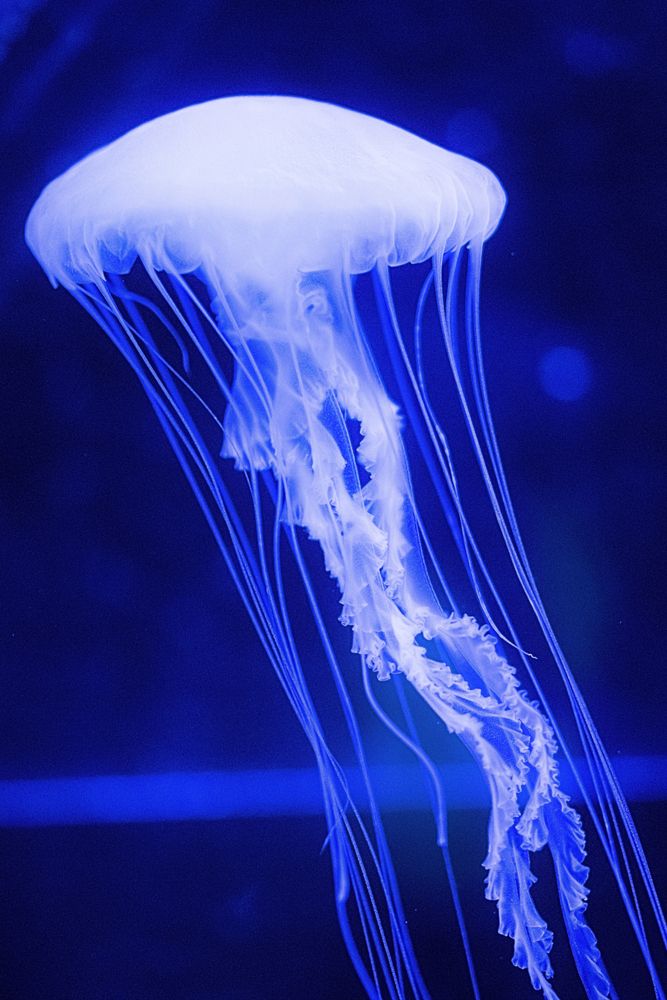 For horizontal movement from place to place however, jellyfish largely depend upon ocean currents, tides and wind.
For horizontal movement from place to place however, jellyfish largely depend upon ocean currents, tides and wind.
Food
Jellyfish form an important part of the marine food web. Carnivorous, they feed on a variety of small floating organisms as well as comb jellies and occasionally other jellyfish. Larger jellyfish can capture and devour large crustaceans and other marine organisms.
In turn, many marine animals, including spadefish, sunfish, and sea turtles eat jellyfish. Some species, including the mushroom and cannonball jellyfish, are considered a delicacy by humans. Pickled or semi-dried mushroom jellyfish are consumed in large quantities in Asia, where they constitute a multimillion-dollar part of the seafood business.
Venom Apparatus
For defense and feeding jellyfish have specialized stinging cells which contain venom. The stinging structure consists of a hollow coiled thread with barbs along its length. These nematocysts are concentrated on the tentacles or oral arms.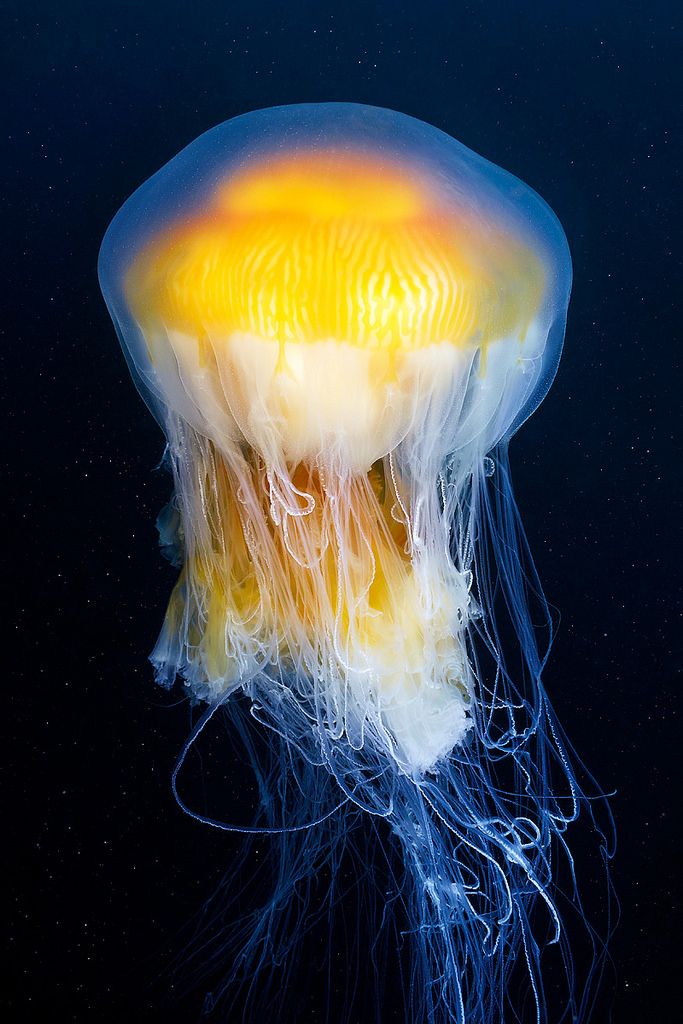 A single tentacle can have hundreds or thousands of nematocysts embedded in the epidermis.
A single tentacle can have hundreds or thousands of nematocysts embedded in the epidermis.
When tentacles make contact with an object, pressure within the nematocyst forces the stinging thread to rapidly uncoil. The thousands of nematocysts act as small harpoons, firing into prey and injecting paralyzing toxins.
Jellyfish use stings to paralyze or kill small fish and crustaceans, but the stings of some jellyfish can harm humans. Jellyfish do not “attack” humans, but swimmers and beachcombers can be stung when they accidentally touch jellyfish tentacles.
The severity of the sting depends on the species of jellyfish, the penetrating power of the nematocyst, the thickness of the victim’s skin, the sensitivity of the victim to the venom. The majority of stings from jellyfish occur in tropical and warm waters. Most jellyfish along the South Carolina coast inflict only mild stings that result in minor discomfort.
Local Jellyfish
Although most jellyfish that inhabit South Carolina waters are harmless to humans, there are a few that require caution.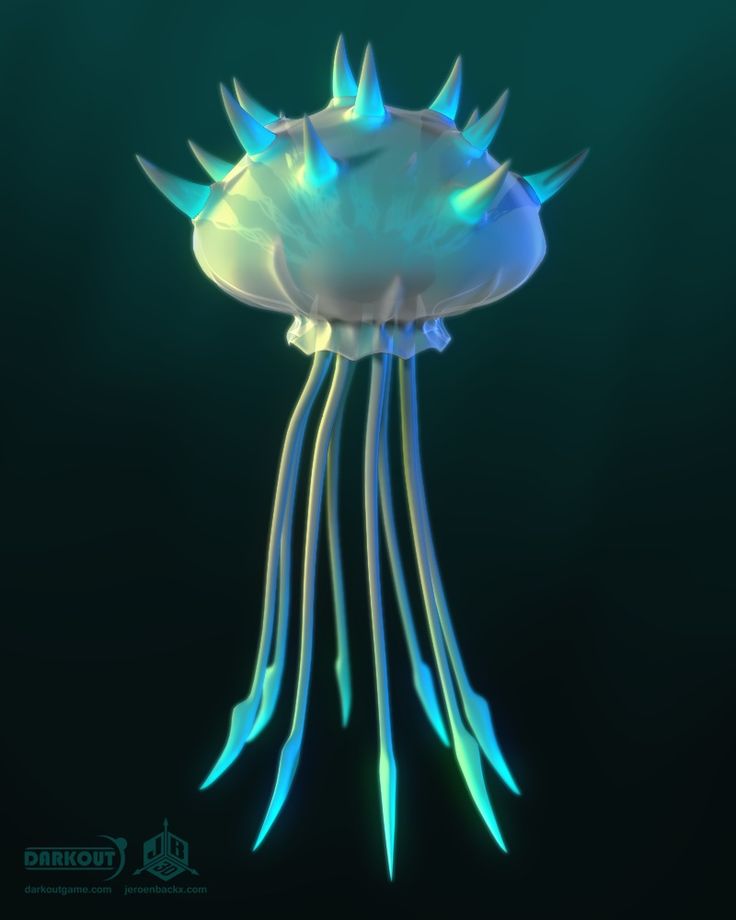 Learning how to identify the different species can help you decide which ones can be safely ignored.
Learning how to identify the different species can help you decide which ones can be safely ignored.
Cannonball Jelly
(Stomolophus meleagris)
Cannonball jellyfish are the most common jellyfish in our area, and fortunately, one of the least venomous. During the summer and fall, large numbers of this species appear near the coast and in the mouths of estuaries. Cannonball jellies have round white bells bordered below by a brown or purple band. They have no tentacles, but they do have a firm, chunky feeding apparatus formed by the joining of the oral arms.
Cannonballs rarely grow larger than 8-10 inches in diameter. Commercial trawl fishermen consider them pests because they clog and damage nets, and slow down fishing.
Lion’s Mane
(Cyanea capillata)
Also known as the winter jelly, the lion’s mane typically appears during colder months. The bell, measuring 6-8 inches, is saucer-shaped with reddish-brown oral arms and eight clusters of tentacles hanging underneath. Stinging symptoms are similar to those of the moon jelly but, usually more intense. Pain is relatively mild and often described as burning rather than stinging.
Stinging symptoms are similar to those of the moon jelly but, usually more intense. Pain is relatively mild and often described as burning rather than stinging.
Mushroom Jelly
(Rhopilema verrilli)
The mushroom jelly resembles the cannonball jelly, but differs in many ways. The larger mushroom jelly, growing 10-20 inches in diameter, lacks the brown band of the cannonball and is much flatter and softer. Like the cannonball, the mushroom jelly has no tentacles and a chunky feeding apparatus, but differs in its long fingerlike appendages that hang from the feeding apparatus.
This species is also considered a pest by commercial fishermen, but they are much less of a problem than cannonball jellies. The mushroom jelly does not represent a hazard to humans.
Southern Moon Jelly
(Aurelia marginalis)
Probably the most widely recognized jellyfish, the moon jelly occurs infrequently in South Carolina waters.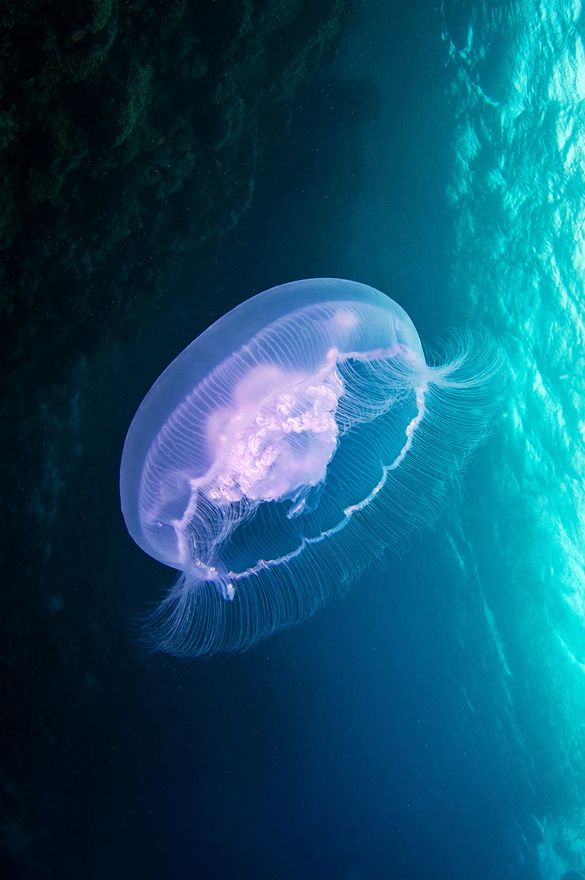 It has a transparent, saucer-shaped bell and is easily identified by the four pink “horseshoes” visible through the bell. It typically reaches 6-8 inches in diameter, but some exceed 20 inches.
It has a transparent, saucer-shaped bell and is easily identified by the four pink “horseshoes” visible through the bell. It typically reaches 6-8 inches in diameter, but some exceed 20 inches.
The moon jelly is only slightly venomous. Contact can produce prickly sensations to mild burning. Pain is usually restricted to immediate area of contact.
Sea Nettle
(Chrysaora quinquecirrha)
Common in the summer, this jellyfish is saucer-shaped, usually brown or red, and 6-8 inches in diameter. Four oral arms and long marginal tentacles hang from the bell and can extend several feet.
Considered moderate to severe, sea nettle stings are similar to those of the lion’s mane. This species causes most of the jellyfish stings that occur in South Carolina waters. Exercise caution if sea nettles are observed in the water, and do not swim if large numbers are present.
Sea Wasp
(Chiropsalmus quadrumanus)
Known as the box jelly because of its cube-shaped bell, the sea wasp is the most venomous jellyfish inhabiting our waters. Their potent sting can cause severe skin irritation and may require hospitalization. Sea wasps are strong, graceful swimmers reaching 5-6 inches in diameter and 4-6 inches in height. Several long tentacles hang from the four corners of the cube. A similar species, the four-tentacled Tamoya haplonema, also occurs in our waters.
Their potent sting can cause severe skin irritation and may require hospitalization. Sea wasps are strong, graceful swimmers reaching 5-6 inches in diameter and 4-6 inches in height. Several long tentacles hang from the four corners of the cube. A similar species, the four-tentacled Tamoya haplonema, also occurs in our waters.
Portuguese Man-of-War
(Physalia physalis)
Although closely related to jellyfish, the Portuguese man-ofwar is not a “true” jellyfish. These animals consist of a complex colony of individual members, including a float, modified feeding polyps and reproductive medusae.
They typically inhabit the tropics, subtropics and Gulf Stream. Propelled by wind and ocean currents, they sometimes drift into nearshore waters of South Carolina. Though they visit our coast only infrequently, swimmers should learn to identify these highly venomous creatures.
The gas-filled float of the man-of-war is purple-blue, up to 10 inches long.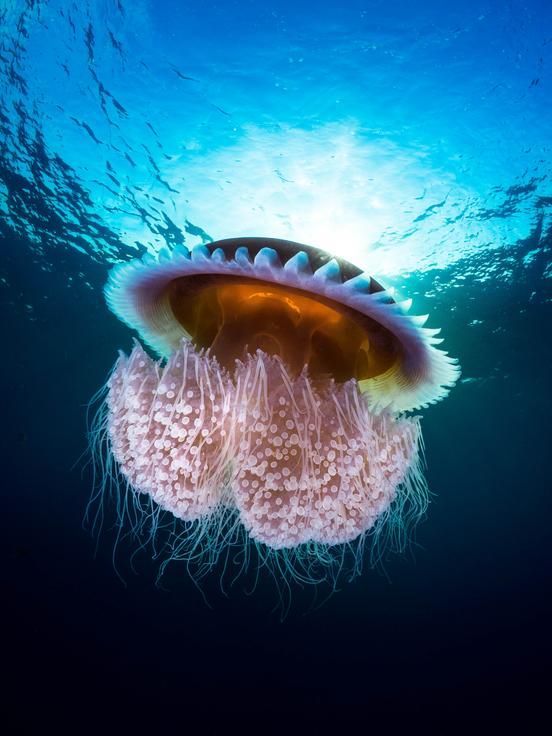 Under the float, tentacles equipped with thousands of stinging cells hang from the feeding polyps which extend as much as 30 to 60 feet.
Under the float, tentacles equipped with thousands of stinging cells hang from the feeding polyps which extend as much as 30 to 60 feet.
The man-of-war can inflict extremely painful stings. Symptoms include severe shooting pain described as a shock-like sensation, and intense joint and muscle pain. Pain may be accompanied by headaches, shock, collapse, faintness, hysteria, chills, fever, nausea and vomiting.
Initial contact with a man-of-war may produce only a small number of stings. But trying to escape from the tentacles may greatly increase stings. Severe stings can occur even when the animal is beached or dead.
Another jellyfish, the smaller by-the-wind-sailor, also has a blue bladder and occasionally enters South Carolina coastal waters, but causes only a mild, tingling sting. Given the significant danger of the man-of-war, all jellyfish having a blue float should be considered dangerous.
Treatment of Sting
If stung by a jellyfish, the victim should carefully remove the tentacles that adhere to the skin by using sand, clothing, towels, seaweed or other available materials.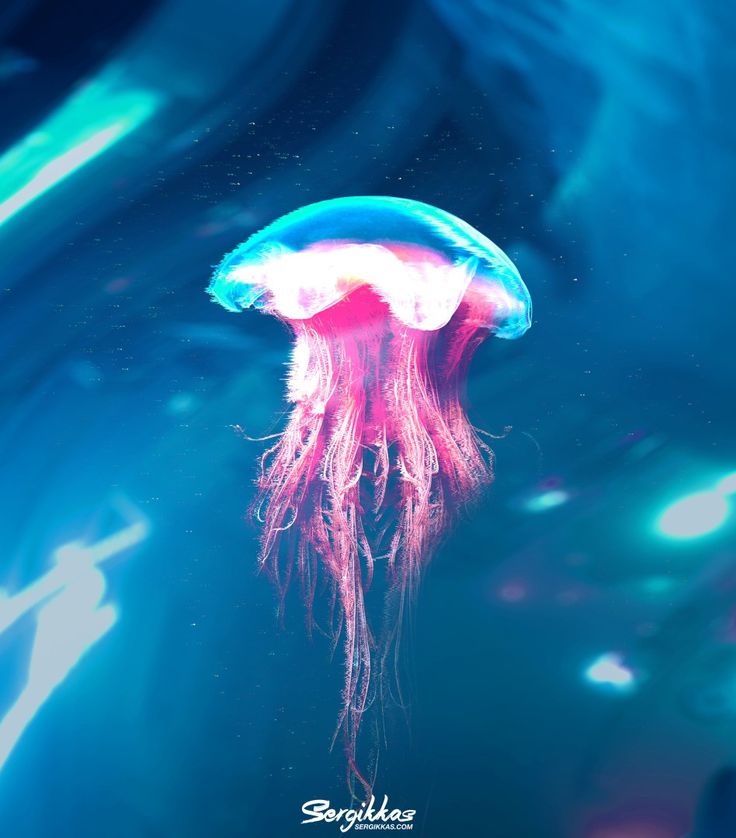 As long as tentacles remain on the skin, they will continue to discharge venom.
As long as tentacles remain on the skin, they will continue to discharge venom.
A variety of substances may reduce the effects of jellyfish stings. Meat tenderizer, sugar, vinegar, plant juices and sodium bicarbonate have all been used with varying degrees of success. Applying any form of alcohol, or urine may increase the pain and cause severe skin reactions.
Victims of serious stings should get out of the water as soon as possible to avoid drowning. If swelling and pain from more serious stings persist, prompt medical attention should be sought. Recovery periods can vary from several minutes to several weeks.
Prevention
Care should be taken when swimming in areas where dangerous jellies are known to exist or when an abundance of jellies of any type is present. Keep in mind that tentacles of some species may trail a great distance from the body of the organism and should be given lots of room. Stings, resulting from remnants of damaged tentacles, can occur in waters after heavy storms.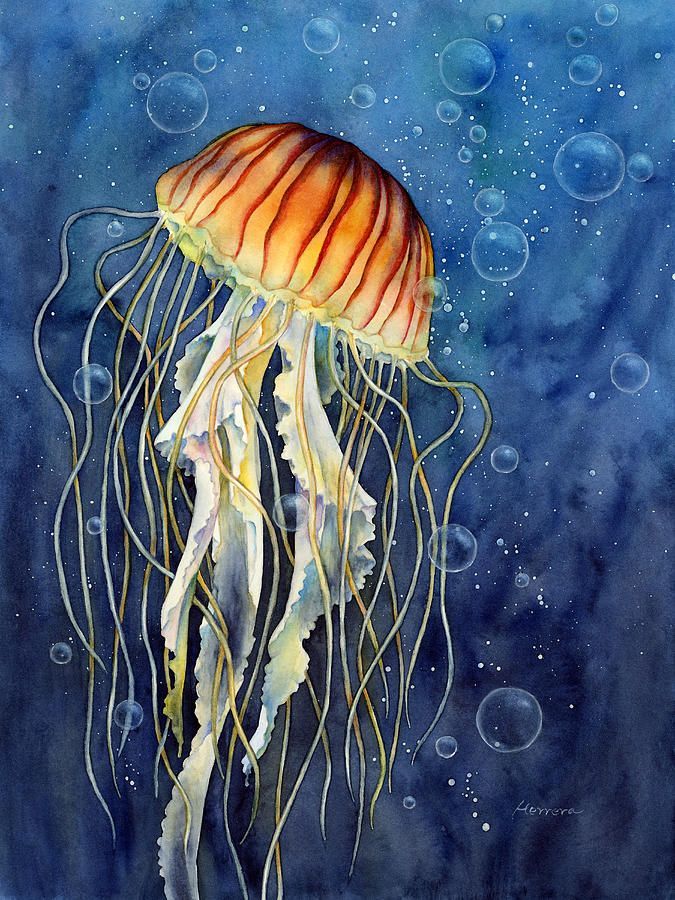 Rubber skin-diving suits offer protection against most contact.
Rubber skin-diving suits offer protection against most contact.
Be careful when investigating jellyfish that have washed ashore. Although they may be dead, they may still be capable of inflicting stings. Remember to take precautions when removing tentacles after contact or additional stings may result.
Saltwater Fishing Conservation & Ethics
Ocean resources, once thought to be unlimited, have declined rapidly in recent decades, due in part to the overharvest of many commercial and recreational species of fish and shellfish.
To reduce overfishing, all anglers should practice wise conservation practices and adopt an ethical approach to fishing.
Size and catch limits, seasons and gear restrictions should be adhered to strictly. These regulations change from time to time as managers learn more about fish life histories and how to provide angling opportunities without depleting fish populations.
The challenge of catching, not killing, fish should provide anglers with the excitement and the reward of fishing. Undersized fish or fish over the limit should be released to ensure the future of fish populations.
Undersized fish or fish over the limit should be released to ensure the future of fish populations.
More and more South Carolina fishermen now practice tag and release, which not only conserves resources but also provides information on growth and movement of fish.
Saltwater fishermen can further contribute to conservation by purchasing a Saltwater Recreational Fishing License, which is required to fish from a private boat or gather shellfish in South Carolina’s salt waters. Funds from the sale of licenses must be spent on programs that directly benefit saltwater fish, shellfish and fishermen.
Help ensure the outdoor enjoyment of future generations by strictly adhering to all rules, regulations, seasons, catch limits and size limits, and through the catch and release of saltwater game fish.
Glossary
- Coelenteron
- a simple digestive cavity, which acts as a gullet, stomach and intestine, with one opening for both the mouth and anus.
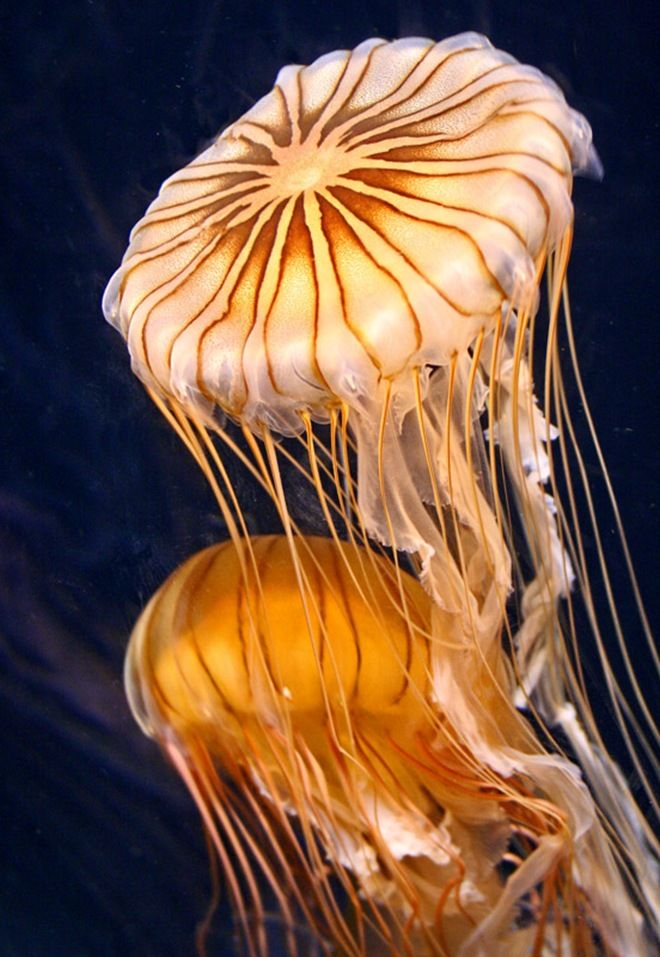
- Ephyra
- first stage that resembles the adult jellyfish
- Epidermis
- outer layer of the jellyfish
- Gastrodermis
- an inner layer which lines the gut
- Gonad
- reproductive organ
- Medusa
- adult form of the jellyfish
- Mesoglea
- middle jelly, or a layer of thick elastic jellylike substance
- Nematocyst
- A capsule inside the cnidoblast that contains a trigger and a stinging structure.
- Phylum Cnidaria
- a structurally simple marine group of both fixed and mobile animals: sea anemones, sea whips, corals and hydroids
- Radial symmetry
- a body plan where the body parts radiate from a central axis Planulae-small swimming larvae
- Scyphistoma
- flower-like polyps of the larval stage
This publication was made possible in part with funds from the sale of the South Carolina Saltwater Recreational Fishing License and the U.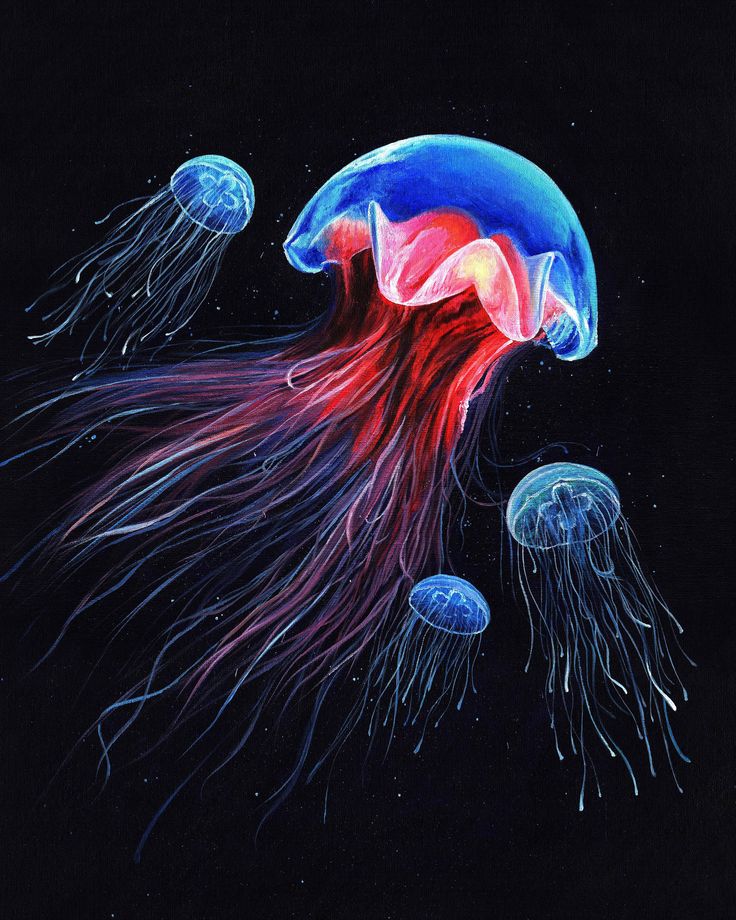 S. Fish and Wildlife Service Sportfish Restoration Fund. The South Carolina Department of Natural Resources publishes an annual Rules and Regulations booklet that lists all saltwater fishing regulations. Have an enjoyable fishing trip by reading these requirements before you fish.
S. Fish and Wildlife Service Sportfish Restoration Fund. The South Carolina Department of Natural Resources publishes an annual Rules and Regulations booklet that lists all saltwater fishing regulations. Have an enjoyable fishing trip by reading these requirements before you fish.
Author credentials: J. David Whitaker, Dr. Rachael King and David Knott, Marine Resources Division
The above information on the jellyfish is available in a brochure, please download the Sea Science - Jellyfish information pamphlet which is in the Adobe PDF file format. Adobe® Reader® is required to open the files and is available as a free download from the Adobe® Web site.
Fun Facts about Jellyfish | JellyWatch
Did you know ...
... some jellyfish are bigger than a human and others are as small as a pinhead? ... people in some countries eat jellyfish? ... that jellyfish have been on Earth for millions of years, even before dinosaurs? ..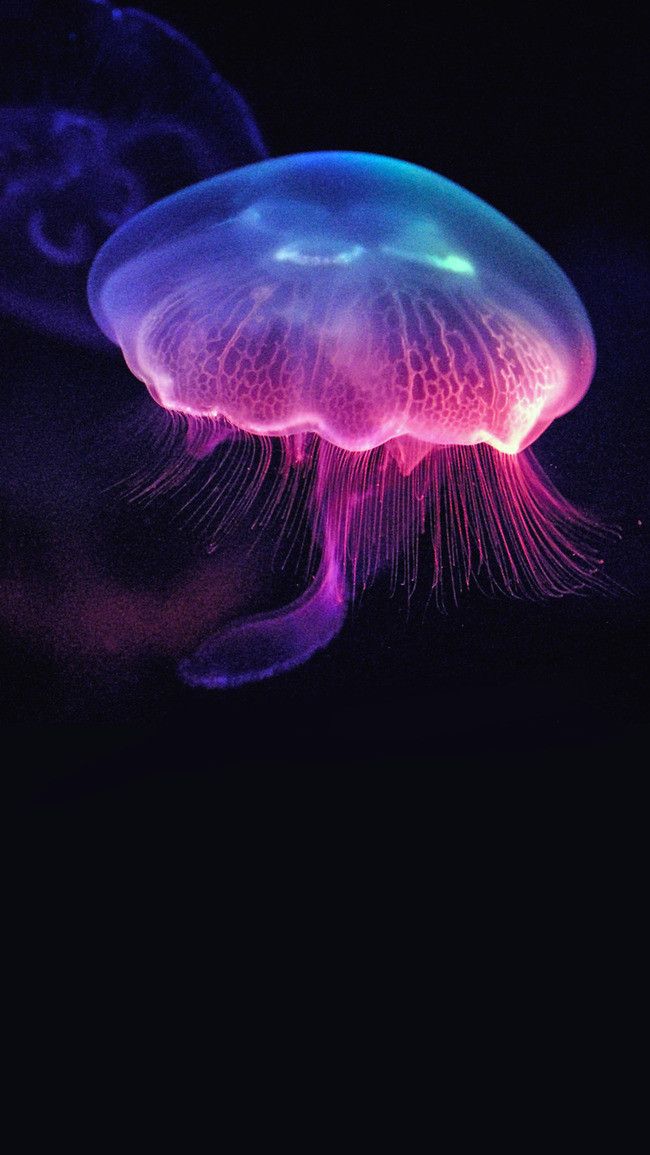 . jellyfish have no brain but some kinds have eyes? ... that jellyfish are mainly made up of water and protein? ... a group of jellyfish is called a smack?
. jellyfish have no brain but some kinds have eyes? ... that jellyfish are mainly made up of water and protein? ... a group of jellyfish is called a smack?
What is a jellyfish?
The word jellyfish is a common term used to describe animals that are gelatinous or made up of ‘jelly-like’ material. There are many different types of jellyfish, including stinging kinds called medusae and non-stinging kinds called comb jellies or ctenophores. Another type of jelly animal called a salp is even in the same group as humans!
What is a bloom?
When huge numbers of plants or animals appear suddenly, scientists call it a 'bloom'. In some areas of the world, millions of jellyfish can swarm together, and these blooms cause problems for fisheries and tourism. If you've been at the beach or on a boat at some point when it seemed like jellyfish were everywhere – then maybe you have even seen a jellyfish bloom.
How do jellyfish blooms form?
Jellyfish are plankton (from the Greek word planktos, meaning to wander or drift) and are not strong swimmers, so they are at the mercy of the ocean currents. Blooms often form where two currents meet and if there is an onshore breeze thousands of jellyfish can be beached.
Are jellyfish increasing globally?
This is the main question that the Global Jellyfish Group is trying to answer but it is a difficult question, because no one has tried to examine jellyfish blooms from all over the world before. When conditions are good (for example, the temperature is just right and there is plenty of food) it is normal for jellyfish to grow fast and reach large numbers. This is part of the natural seasonal cycle of many species of jellyfish. However, scientists think that we might be seeing more jellyfish blooms than before because ocean conditions are changing, and sometimes those changes are because of humans.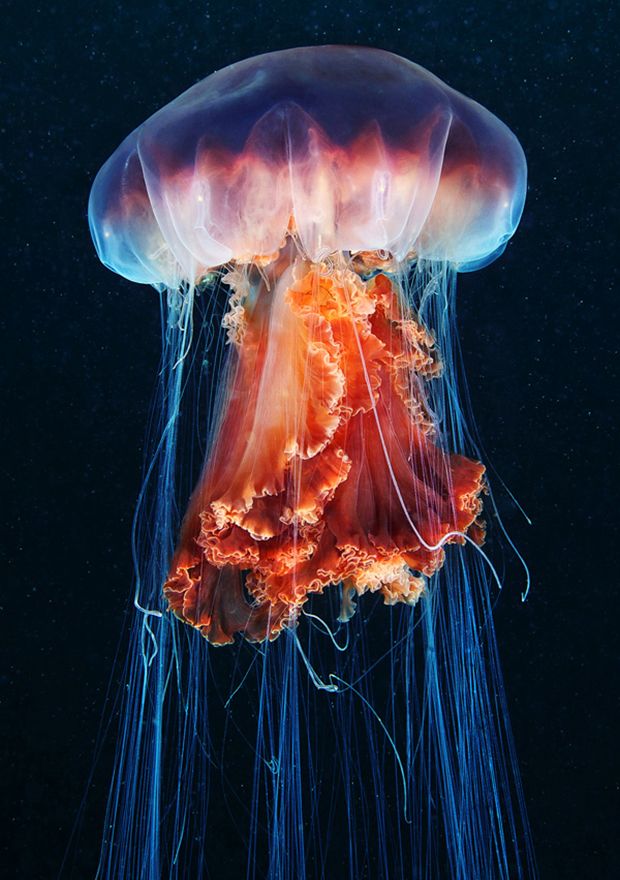 A combination of over-fishing, climate change, introduction of species and more nutrients could lead to a surplus of jellies.
A combination of over-fishing, climate change, introduction of species and more nutrients could lead to a surplus of jellies.
How long do jellyfish live?
Most jellyfish live less than one year, and some some of the smallest may live only a few days. Each species has a natural life cycle in which the jellyfish form is only part of the life cycle (see video clip showing different life cycle stages). The most familiar stage is the medusa stage, where the jelly usually swims around and has tentacles hanging down. Male and female medusae reproduce and form thousands of very small larvae called planulae. The larvae then settle on the bottom of the ocean on rocks and oyster shells and form a small polyp that looks just like a tiny sea anemone. Each polyp will bud off many baby jellyfish called ephyrae that grow very quickly into adult medusae. Some scientists believe that jellyfish have increased because coastal development helps provide more underwater habitat for jellyfish polyps to grow.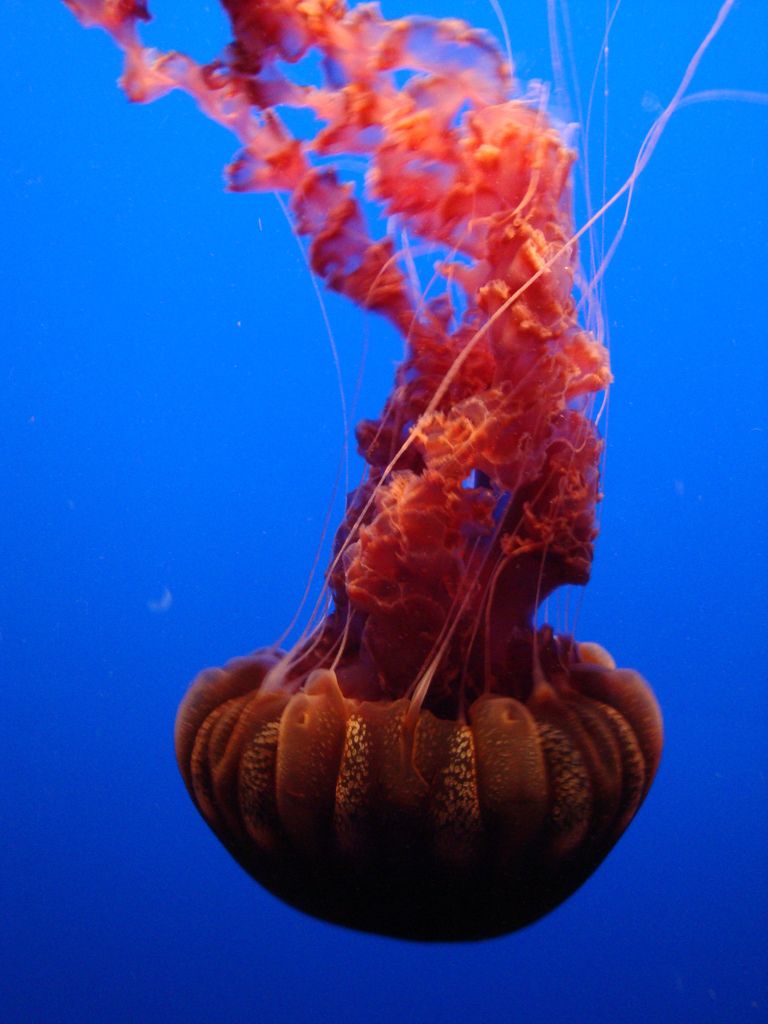
Why do some jellyfish sting?
Some jellyfish have millions of very small stinging cells in their tentacles called nematocysts. These cells are used to capture food by injecting toxin into the prey. When we are stung it hurts because the toxin goes through our skin – ouch!
What do they eat?
Jellyfish eat many different types of things, such as small plants (phytoplankton), copepods (crustacean zooplankton), fish eggs and other small fish called larvae; they also eat the planktonic eggs and young stages (also called larvae) of many different kinds of marine animals. Some jellyfish even eat other jellyfish! When jellyfish form blooms they eat almost everything in the water and this can cause problems for fisheries because there is no food left for the fish to eat!
Are there good things about jellyfish?
Yes, jellyfish are very important animals in the ocean. We should definitely respect and not harm them.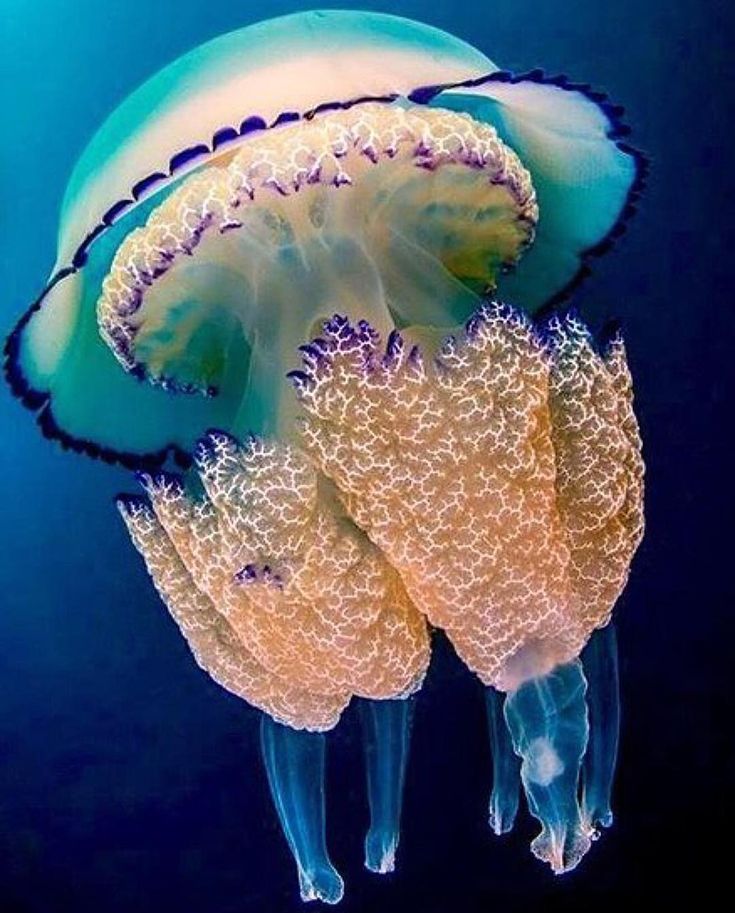 They are food for a number of marine animals such as large fish and turtles. Even humans eat jellyfish – yummy! Jellyfish also provide habitat for many juvenile fishes in areas where there are not many places to hide. They can also protect the small fish from being eaten by predators with their stinging cells. Also, many young crabs hitchhike on the top of jellyfish so they don’t have to swim.
They are food for a number of marine animals such as large fish and turtles. Even humans eat jellyfish – yummy! Jellyfish also provide habitat for many juvenile fishes in areas where there are not many places to hide. They can also protect the small fish from being eaten by predators with their stinging cells. Also, many young crabs hitchhike on the top of jellyfish so they don’t have to swim.
What can we do?
There is a lot that you can do to help us learn more about jellyfish blooms. Talk to your teachers, friends and parents about jellyfish and discuss how you can help clean up the ocean. Help us out by starting or joining in on community and school projects. Next time you’re at the beach or walking along a jetty or pier or out on a boat, count the jellyfish you see and report your findings on www.jellywatch.org. Write stories, draw pictures, visit your local aquarium and read books about jellyfish.
Some fun jellyfish websites with more information about jellyfish
The Jellywatch webpage The Scyphozoan Wikipedia page Kevin Raskoff’s Jellyfish page Dave Wrobel’s JellyZone page Claudia Mills' website Casey Dunn’s Siphonophore webpage Monterey Bay Aquarium – Look for jellyfish online exhibit
History - Meduza
News
News
History
News
9000 -Yav group erected a monument to a white coat on the embankment of the Fontanka River.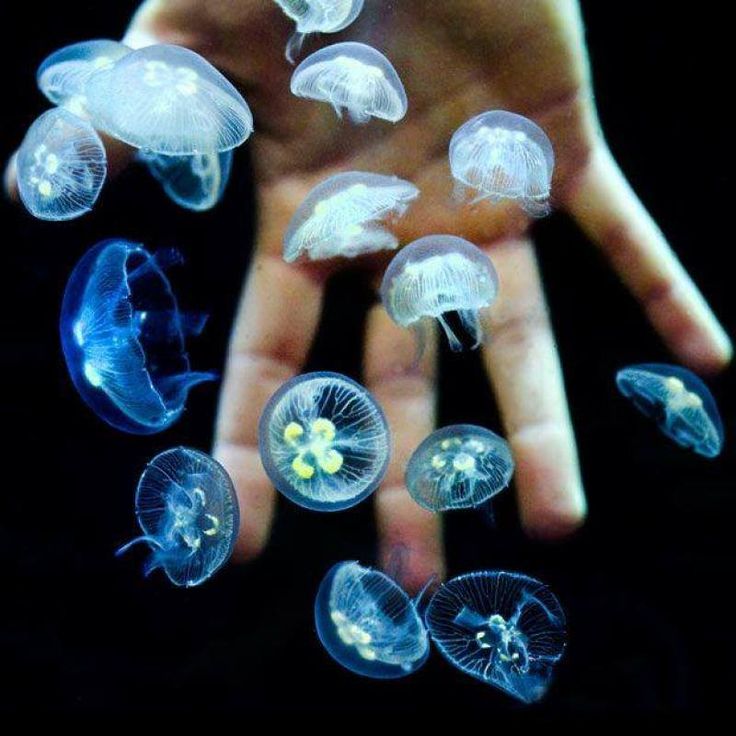 Installation… Read more
Installation… Read more
St. Petersburg artists from the Yav art group erected a monument to the white coat on the Fontanka River embankment. The installation is a headless figure in a white coat, the sleeves of which are tied behind the back like a straitjacket. The figure stands on a pedestal with its back to a computer monitor. The artists published photos of the installation on the group's social networks. “Dedicated to all the white-fingered ones. To put on a white coat means to condemn another person from a position from above, and at the same time directly or indirectly indicate that the wearer of the white coat himself is completely different, never was and never will be. Also, his children, grandchildren, pets, etc. will never be like that.” - the authors of the monument accompanied the pictures with this text. They told the Rise publication that they were inspired to create the work by reading Twitter.
Art group “Yav”
History
History
9000 5 hours ago
History
9000
News
News
Presidential President Dmitry Peskov explained on March 14 on why Russia is ready to extend the “grain transaction” with Ukraine .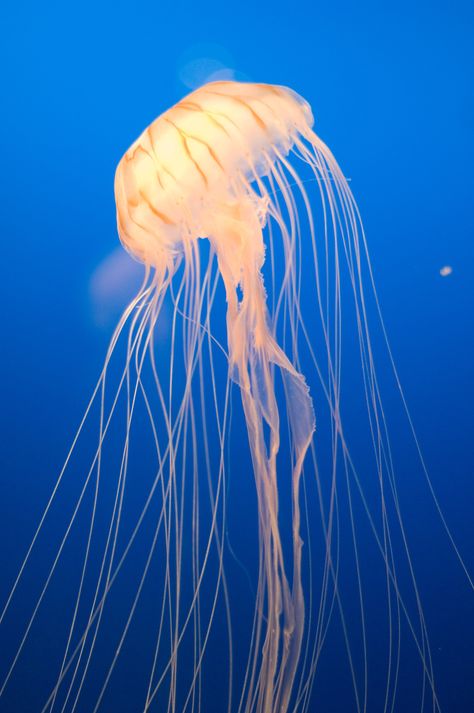 .. Read more
.. Read more
Press Secretary of the President of the Russian Federation Dmitry Peskov on March 14 explained why Russia is ready to extend the “grain deal” with Ukraine for only 60 days instead of 120. Moscow, since the Russian conditions in this transaction are not met. Peskov and other representatives of the Russian authorities have repeatedly used the expression "gesture of goodwill" (and not only it) to explain their actions - in particular, this is how the retreats of the Russian military from the Kiev and Chernihiv regions last spring and from Zmeiny Island near Odessa were called in the past in summer. The expression “goodwill gesture” became a meme, and President of Ukraine Volodymyr Zelensky said after the withdrawal of Russian troops from Kherson: “The enemy does not give us gifts, does not make “goodwill gestures”. We are fighting for all this.”
News
9000 history
news
news
2 minutes
On March 12, the 95th Academy Awards took place in Los Angeles.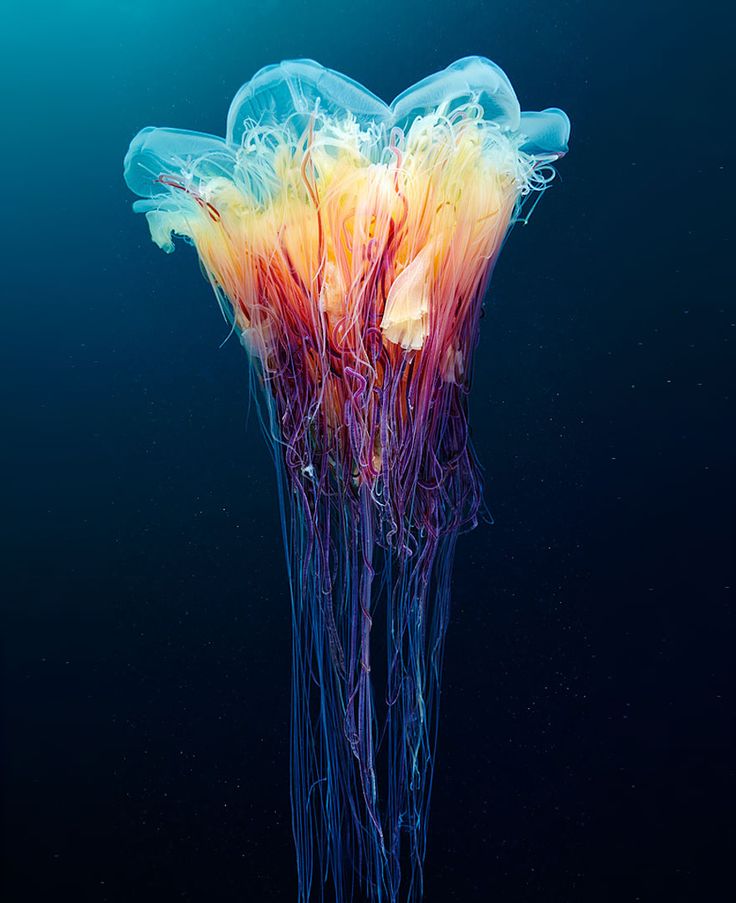 The
The
Academy Awards took place in Los Angeles on March 12 in the Best Documentary category. The award in the category "Best Documentary" was awarded to the film "Navalny" about the poisoning of a Russian politician. The award, along with Canadian director Daniel Roer, was received by the family of Alexei Navalny - wife Yulia, daughter Daria and son Zakhar.
stories
News
History
History
News
9000
on the night of March 13 in los Angeles, the Academy Awards are being presented. In the category “Best Documentary… Read more
On the night of March 13, the Oscars are being presented in Los Angeles. Navalny, a film by Canadian director Daniel Roer, about the poisoning of Alexei Navalny by Novichok, his treatment and return to Russia, won in the Best Documentary category. The ceremony was attended by the politician's wife Yulia Navalnaya, daughter Daria and son Zakhar. Together with the film team, as well as with investigators Khristo Grozev and Maria Pevchikh, they took to the stage of the Dolby cinema during the award ceremony.
The ceremony was attended by the politician's wife Yulia Navalnaya, daughter Daria and son Zakhar. Together with the film team, as well as with investigators Khristo Grozev and Maria Pevchikh, they took to the stage of the Dolby cinema during the award ceremony.
Kevin Winter / Getty Images
news
news
The film “Everything, Everywhere and … Read more
The 95th Academy Awards ceremony took place in Los Angeles. The triumph was the film "Everything, everywhere and at once", which received seven Oscars. "Navalny" became the best documentary film. The wife and children of the Russian politician, who is in the colony, went up to the stage for the Oscars, Yulia Navalnaya made a short speech.
History
History
News
Film “All Academy Awards Gala… Read more
All Around All At Once was nominated for 11 Oscars and won seven Academy Awards at the Gala on March 12th.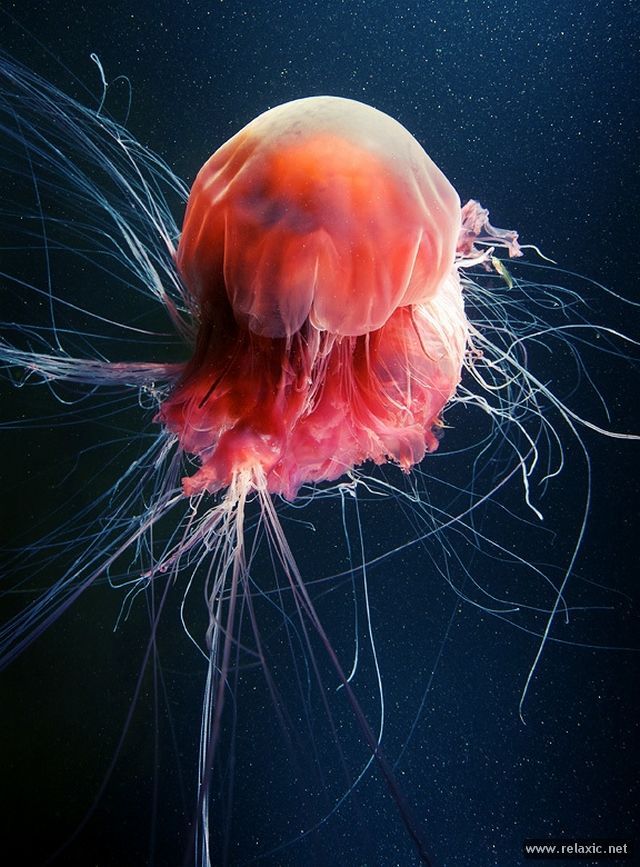 The film brought the first Oscars to directors Dan Kwan and Daniel Scheinert, actresses Michelle Yeoh and Jamie Lee Curtis, and actor Ke Huy Kuan. The tape won in all major nominations, where it was nominated for an Academy Award. Pictured is the Oscar for best film. The award in this nomination is received by the producers of the film, one of them with a statuette is Jonathan Wang.
The film brought the first Oscars to directors Dan Kwan and Daniel Scheinert, actresses Michelle Yeoh and Jamie Lee Curtis, and actor Ke Huy Kuan. The tape won in all major nominations, where it was nominated for an Academy Award. Pictured is the Oscar for best film. The award in this nomination is received by the producers of the film, one of them with a statuette is Jonathan Wang.
History
News
History
9000
Parsing
History
002 Parsing
History
History
9000 5 days ago
History
9000
news
news
stories
90Ol000 10 days ago0005 10 days ago
one of the main reasons is that they use the prisoners as cannon fodder) - Meduza
Concord Press Service
Wagner PMC continues its offensive near Bakhmut and inside the city quarters and, apparently, will soon completely surround the rest).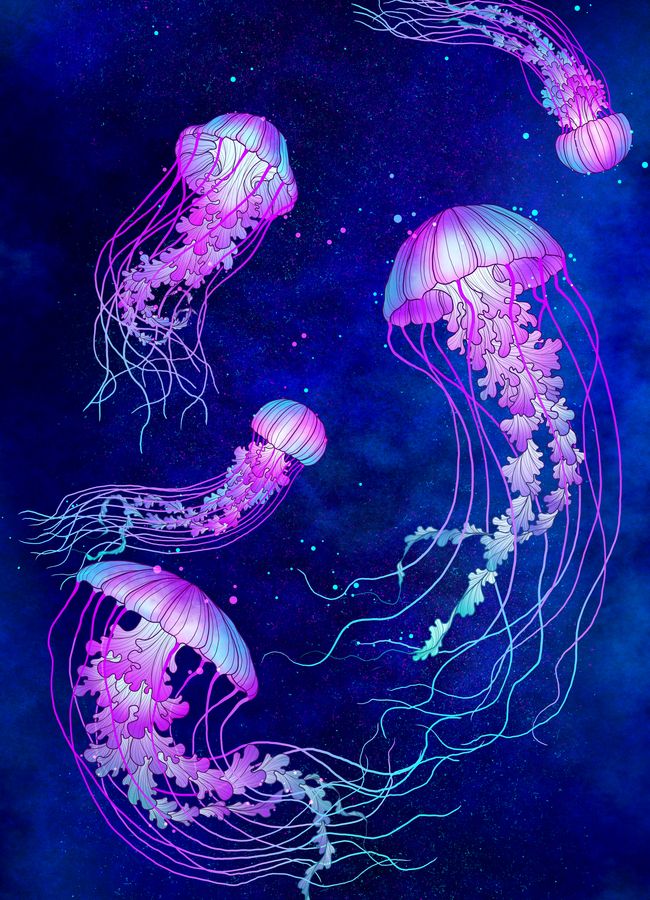 Despite this, the Ukrainian command decided to continue the defense of the city, starting the transfer of the next portion of reserves to this direction. This slowed down, but did not yet stop, the advance of the PMC mercenaries. At the same time, the regular Russian army, which is also trying to attack in several directions at once against the more modest Ukrainian forces, cannot achieve a result. What exactly makes the PMC the most effective Russian force at the current stage of the war? And what can oppose the Armed Forces of Ukraine to it?
Despite this, the Ukrainian command decided to continue the defense of the city, starting the transfer of the next portion of reserves to this direction. This slowed down, but did not yet stop, the advance of the PMC mercenaries. At the same time, the regular Russian army, which is also trying to attack in several directions at once against the more modest Ukrainian forces, cannot achieve a result. What exactly makes the PMC the most effective Russian force at the current stage of the war? And what can oppose the Armed Forces of Ukraine to it?
How did PMC Wagner fight in Ukraine last year?
PMC Wagner, controlled by businessman Yevgeny Prigozhin close to Putin, did not participate in a full-scale invasion in its first days and weeks. Mercenaries appeared in Ukraine only in April 2022. The assault detachments were transferred to the city of Popasna, Luhansk region. He has been on the "line of contact" of Ukrainian troops with the separatists of the self-proclaimed LPR since 2015 and was well prepared by Kiev for defense.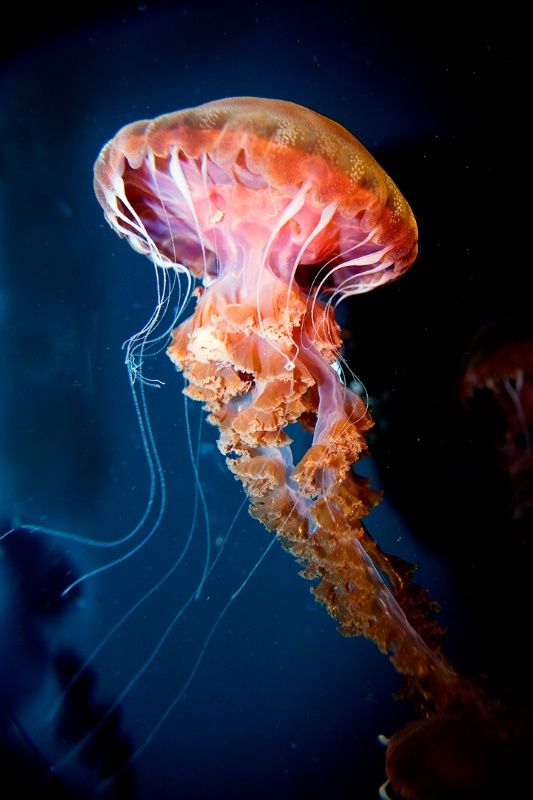
By that time, the Russian command, having suffered defeats near Kiev, Kharkov and Nikolaev, launched an offensive in several directions at once in the Donbass. Most of them ended in nothing, but the Wagner PMC managed to drive the Armed Forces of Ukraine out of Popasnaya (and the troops of the Central Military District captured the city of Liman).
This advance ended
The Russian command decided to immediately build on the success and try to decide the outcome of the entire summer campaign in 2022 by encircling Ukrainian troops in Severodonetsk and Lysichansk.
To the north of Popasnaya PMC Wagner, together with units of the regular army, broke into the rear of the Armed Forces of Ukraine. But the Russian troops of the Central Military District, which were supposed to strike towards them, could not force the Seversky Donets River and suffered heavy losses.
The encirclement did not happen, and the Russian forces squeezed the Armed Forces of Ukraine out of Severedonetsk and Lysichansk for another two months, while suffering significant losses.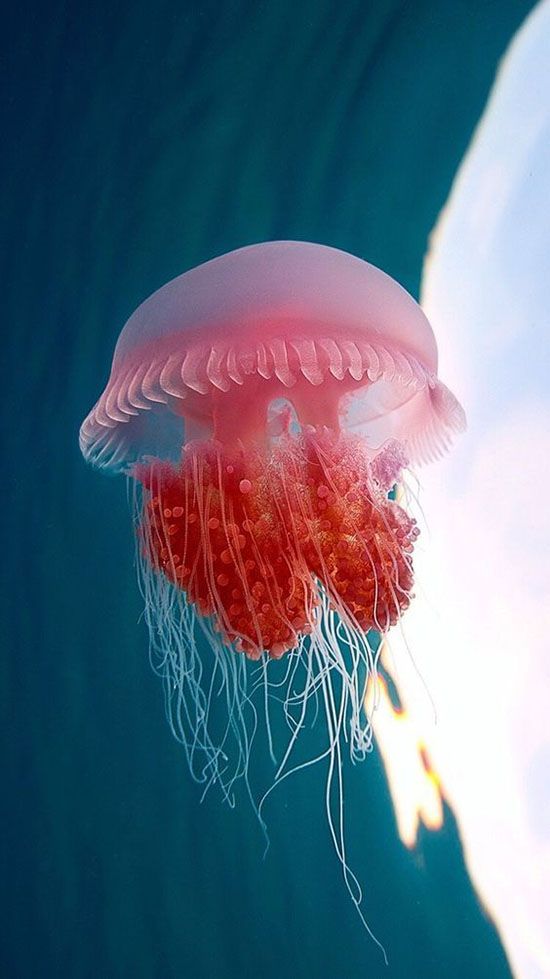
After the capture of Lisichansk in early July, the Russians reached the outskirts of Soledar and Bakhmut from the east, but their offensive momentum dried up. Putin said the troops needed rest. Two months later, the Armed Forces of Ukraine began their counter-offensives - first in the Kherson region, and then in the Kharkov region. The Armed Forces of the Russian Federation completely lost the initiative and went on the defensive for several months.
PMC Wagner had already demonstrated that its tactics were well suited to the conditions prevailing at the front. In Popasna, a video of the battle of an assault group of mercenaries was filmed, which, with the support of a reconnaissance drone, were able to capture the position of a larger unit of the Armed Forces of Ukraine. This video contrasted sharply with the pictures of urban battles in Mariupol and Rubizhne, Luhansk region.
Since August, the Wagner PMC has dramatically expanded its resources by recruiting several tens of thousands of prisoners, as well as other mercenaries (in particular, former contractors and retired military personnel) into its ranks.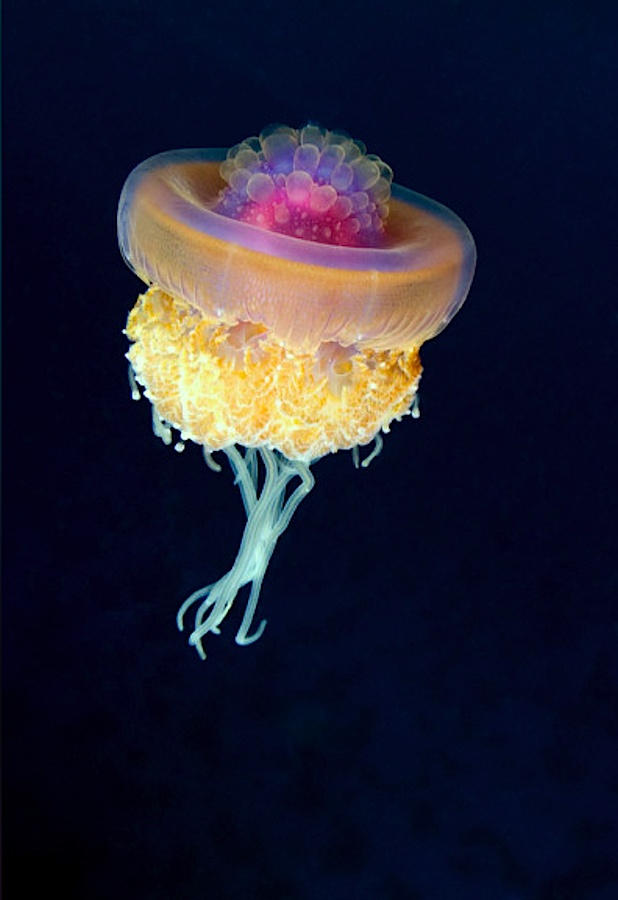 While the RF Armed Forces were retreating from the northern Donbass, the PMC continued its offensive in its central part. On August 1, the Nameniki captured the Ugledar TPP, after which they began a slow advance towards Bakhmut from the south.
While the RF Armed Forces were retreating from the northern Donbass, the PMC continued its offensive in its central part. On August 1, the Nameniki captured the Ugledar TPP, after which they began a slow advance towards Bakhmut from the south.
In October, the PMC strengthened so much that it was given a large section of the front from the northern part of Gorlovka to Soledar (there, however, regular troops were also present, which, however, played a supporting role since autumn). By November, when the Armed Forces of Ukraine liberated Kherson and tried to advance on Svatovo in the north of the Luhansk region, it became clear that the Wagner PMC, despite the difficult situation for all Russian forces at the front, was preparing an operation to capture Soledar and Bakhmut.
The Armed Forces of Ukraine began to transfer reinforcements to the Bakhmut area (including those released after the liberation of the right bank of the Dnieper with Kherson), and then even dismantled their group operating in the Svatovo area - in order to further strengthen the defense in the center of Donbass.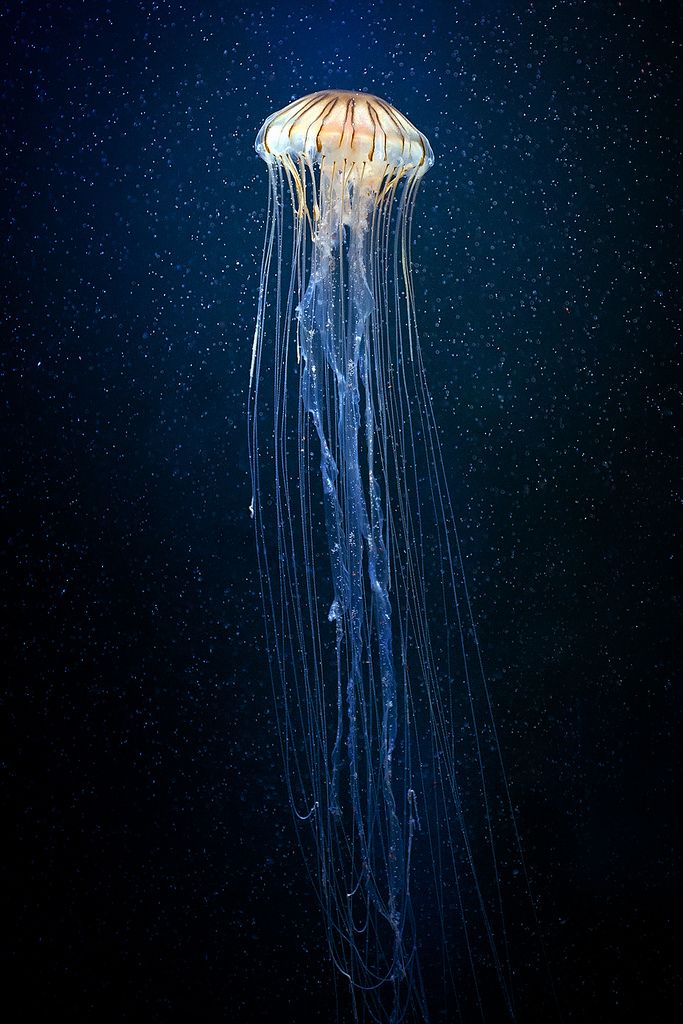 But these reserves have still not been able to hold back the offensive of the Wagner PMC. At the same time, all other offensives of the Russian forces, which began in the winter, did not bring noticeable results.
But these reserves have still not been able to hold back the offensive of the Wagner PMC. At the same time, all other offensives of the Russian forces, which began in the winter, did not bring noticeable results.
Why is the Wagner PMC so effective?
PMC Wagner can be compared (in terms of scale and size of the direction in which it operates) with the groups of the RF Armed Forces, which are formed on the basis of military districts. Mercenaries have their own artillery and even some aircraft.
Not much is known about the organization of the PMC and its methods of warfare (to the point that it is not clear who really prepares operations and commands mercenaries, and also under what circumstances they developed their tactics). The sources are the few and not very specific stories of the mercenaries themselves to the "military corps" who work for the structures of the owner of the PMC, Yevgeny Prigozhin.
In addition, there are footage of the actions of PMC mercenaries filmed by Ukrainian drones, as well as reports by the Ukrainian military and journalists who interviewed other military personnel and studied captured documents.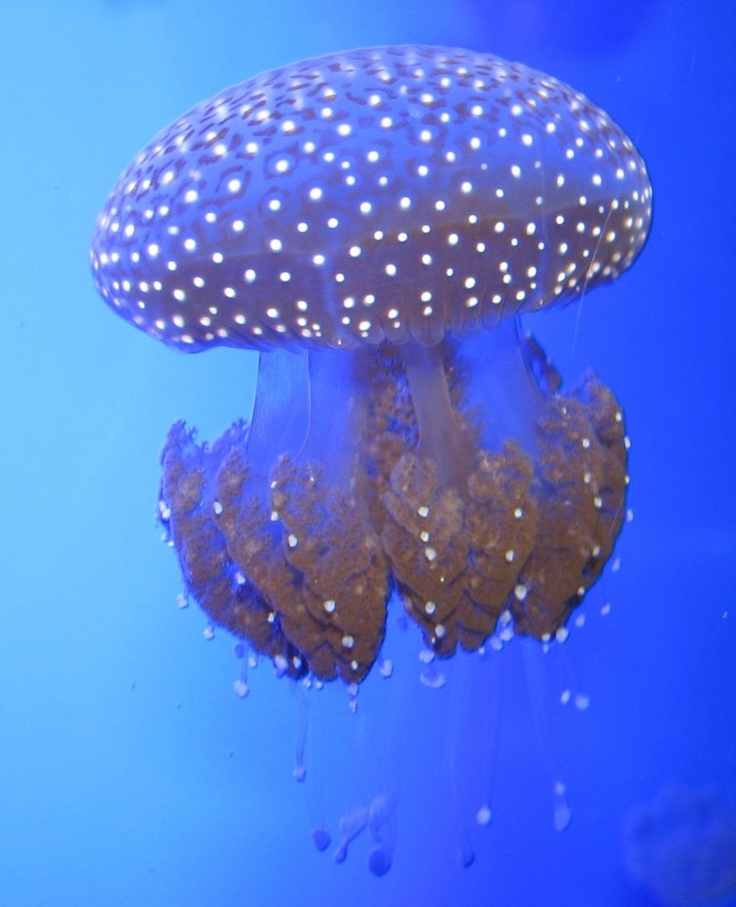 It is difficult to independently confirm the veracity of these reports, but in general they do not contradict documentary evidence from the Russian side, videos from UAVs and what we know about the course of hostilities.
It is difficult to independently confirm the veracity of these reports, but in general they do not contradict documentary evidence from the Russian side, videos from UAVs and what we know about the course of hostilities.
How PMCs differ from regular Russian troops at the operational level
- The command of the PMC shows great flexibility, which is unusual for the armed forces of the Russian Federation. So, during the battle for Bakhmut, the PMC Wagner corrected the direction of the main attacks many times. If in November it seemed that the mercenaries intended to storm and bypass Bakhmut from the south, then in early December, the PMC unexpectedly replaced the troops of the self-proclaimed LPR near Soledar and captured several of its important suburbs (Yakovlevka, Bakhmutskoye). South of Bakhmut at that time, units of the Airborne Forces probably acted instead of mercenaries. Then the PMC again shifted its efforts to the south of Bakhmut, capturing part of its suburb of Opytnoye - but then again hit with all its might in the Soledar area, which led to the capture of the city.
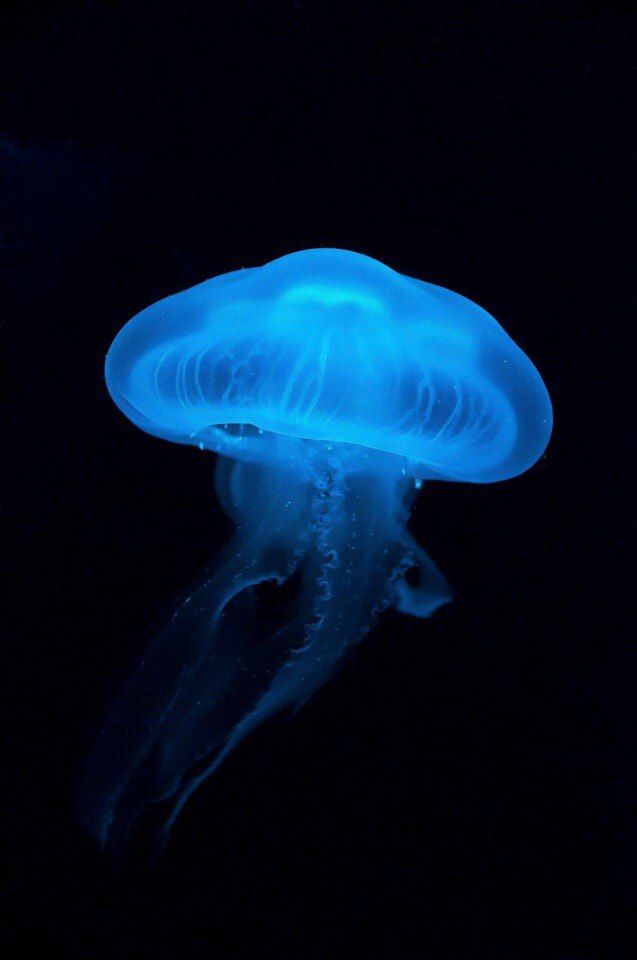 This was followed again by a strike in the south, where the mercenaries captured the village of Kleshcheevka, which was the most important for the defense of Bakhmut. Similarly, the vectors of application of efforts changed in Bakhmut itself. These repeated shifts in the direction of the strike, obviously, "torn apart" the reserves of the Armed Forces of Ukraine. This approach is fundamentally different, for example, from the attack on Ugledar, where the Russian command of the direction (from the Eastern Military District) has been repeating attacks along the same routes for many months.
This was followed again by a strike in the south, where the mercenaries captured the village of Kleshcheevka, which was the most important for the defense of Bakhmut. Similarly, the vectors of application of efforts changed in Bakhmut itself. These repeated shifts in the direction of the strike, obviously, "torn apart" the reserves of the Armed Forces of Ukraine. This approach is fundamentally different, for example, from the attack on Ugledar, where the Russian command of the direction (from the Eastern Military District) has been repeating attacks along the same routes for many months. - PMCs seem to be much better at concentrating forces and resources, and have also established interaction between their assault squads and support forces - artillery, aircraft, etc.
True, PMCs have obvious weaknesses in this regard. The company, unlike the RF Armed Forces, does not even try to use mechanized units for quick strikes into the depths of the defense of Ukrainian troops.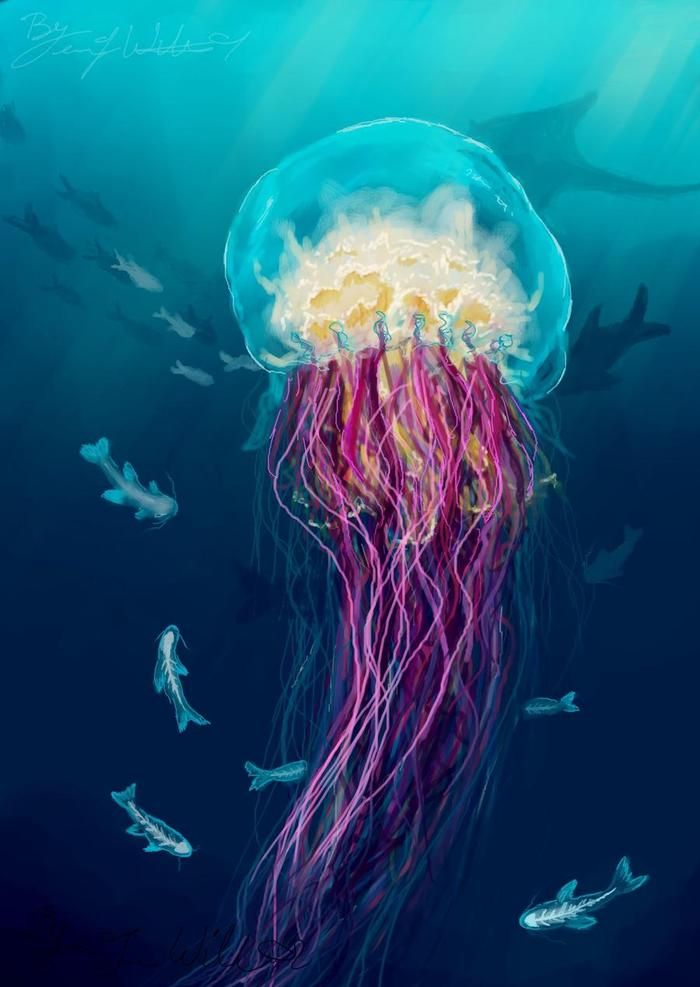 Assault detachments of mercenaries attack on foot, equipment (judging by the video and messages of the Ukrainian military) is used only for transportation to the near rear and fire from long distances. After capturing another Ukrainian position, PMCs consolidate, try to secure the flanks, and prepare the next attacks. Because of all this the advancement of PMC units is methodical, but very slow . This gives the Armed Forces the opportunity to transfer reinforcements to the place of the main attack of the mercenaries. From July 2022 to mid-March 2023, PMC detachments in any of the directions advanced no further than 30 kilometers from Popasnaya, where they began their participation in the war.
Assault detachments of mercenaries attack on foot, equipment (judging by the video and messages of the Ukrainian military) is used only for transportation to the near rear and fire from long distances. After capturing another Ukrainian position, PMCs consolidate, try to secure the flanks, and prepare the next attacks. Because of all this the advancement of PMC units is methodical, but very slow . This gives the Armed Forces the opportunity to transfer reinforcements to the place of the main attack of the mercenaries. From July 2022 to mid-March 2023, PMC detachments in any of the directions advanced no further than 30 kilometers from Popasnaya, where they began their participation in the war.
PMC Wagner's methods are very resource intensive. The company suffers heavy losses in manpower and spends a lot of ammunition. Prigozhin recently announced that he needs 10,000 tons of ammunition every month. From his statement, it was not clear what kind of ammunition he had in mind, but if we are talking only about shells and rockets for MLRS, then with an average weight of one such ammunition of 50 kilograms, PMCs need more than 6.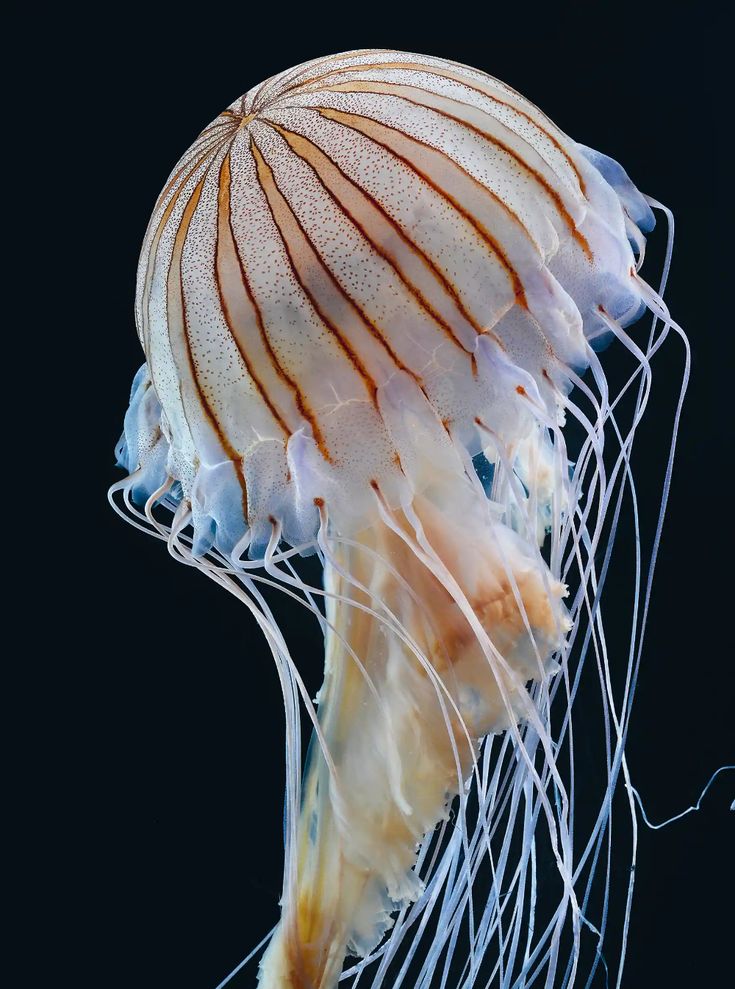 5 thousand shells per day. This is more than the Ukrainian Armed Forces shoot at (according to the Ukrainian command) on all fronts in the same period.
5 thousand shells per day. This is more than the Ukrainian Armed Forces shoot at (according to the Ukrainian command) on all fronts in the same period.
How the actions of mercenaries differ from the regular Russian army at the level of tactics (according to Ukrainian sources, it is the tactics that cause the most trouble for the Armed Forces of Ukraine)
- PMCs operate on the front with assault squads, which, in turn, consist of assault groups. Ukrainian military and journalists report that the group can be from seven to 50 people.
- Groups are trying to quietly approach Ukrainian positions (including at night, using shelters on the ground, etc.). Almost every group is accompanied by a reconnaissance drone (they are still in short supply in the regular army), which studies the position of the Armed Forces of Ukraine in detail. It is alleged that the group commander (and his deputies) receive a detailed plan of approach to the position (and the battle itself) on an electronic map, where the routes for each mercenary are indicated.
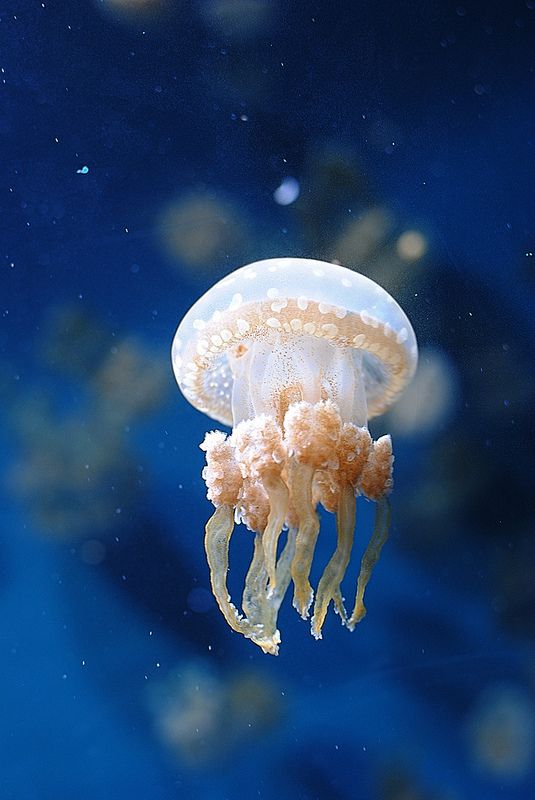 According to intelligence, the means necessary for the battle are calculated (the number of attack aircraft, which allows obtaining numerical superiority, the consumption of ammunition to suppress firing points).
According to intelligence, the means necessary for the battle are calculated (the number of attack aircraft, which allows obtaining numerical superiority, the consumption of ammunition to suppress firing points). - Most of the groups have been reinforced in the form of artillery, which “processes” the attacked position of the Armed Forces of Ukraine. "Suppressive" artillery fire makes it possible for the assault group to come close to the position. After that, a “fire group” of mercenaries enters the business, which strikes at the identified firing points of the Armed Forces of Ukraine from mortars, automatic grenade launchers and / or (in the absence of these fire weapons) from hand grenade launchers.
- After that, the assault on trenches or buildings begins, which is led by mercenary commanders using protected (from listening and suppression) communications, observing events with the help of UAVs.
- Assault teams are more persistent: in case of failure, attacks can be repeated.
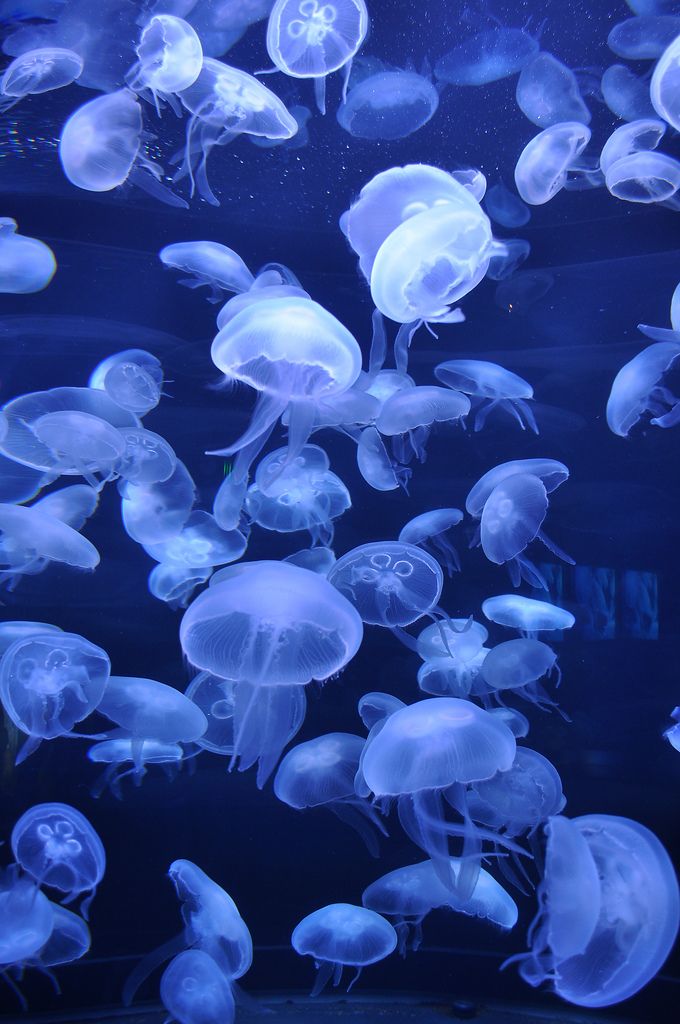 PMC artillery is trying to prevent the approach of the APU reserves to the battlefield.
PMC artillery is trying to prevent the approach of the APU reserves to the battlefield. - Armored vehicles are rarely used directly in close combat. On the other hand, mercenaries use aviation more boldly than the Aerospace Forces of the Russian Federation themselves (army aircraft try not to fall into the Ukrainian air defense zone, while PMC aircraft are actively operating directly above the battlefield and suffer losses). True, the mercenaries themselves have few aviation, and the share of its losses is large.
- Judging by various videos, PMC artillery is dispersed, which allows it to avoid heavy damage. It also requires good management and communication. In the regular Russian army (at least in the early stages of the war), the guns were crowded and suffered heavy losses.
The weak side of this tactic is still the same - heavy losses among attack aircraft. At the same time, according to the Ukrainian military and journalists, most of the losses are borne by the mercenaries directly storming the trenches, among which there are just a lot of prisoners.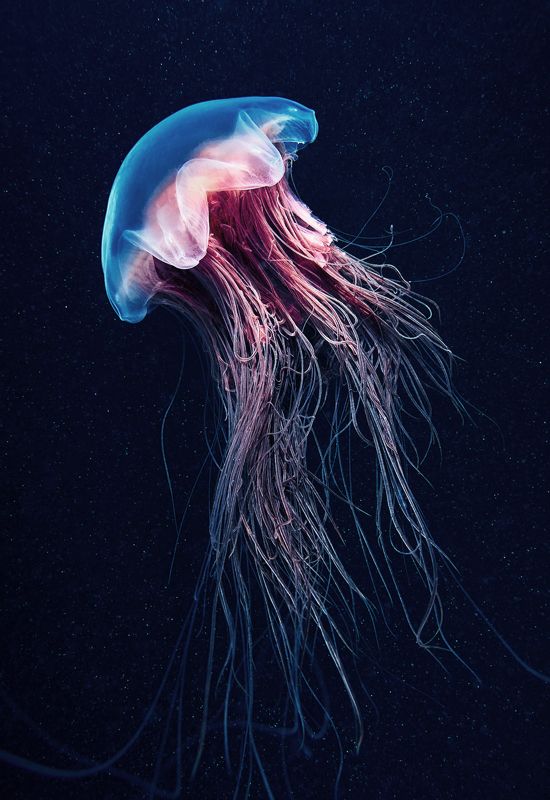 As a result, the PMC spends a "cheap resource", but retains well-trained ex-military specialists.
As a result, the PMC spends a "cheap resource", but retains well-trained ex-military specialists.
In general, this resembles the standard assault tactics developed during the First World War. The main difference, according to various descriptions, is that PMCs gain an advantage through intelligence and quick decision-making - that is, thanks to the same thing that gives Ukraine an advantage over many units of the regular Russian army.
Can the Armed Forces of Ukraine oppose something to such tactics (it seems quite simple)?
The problem of the Armed Forces of Ukraine, according to the Ukrainian military, who studied the tactics of PMCs, is that the defense of many (though not all) Ukrainian units is static: units sit in trenches or buildings - exactly where they were ordered to sit by the command. Reconnaissance equipment (the same drones) is often not enough to constantly study all possible ways for mercenaries to approach. It is precisely such problems (sometimes on an exaggerated scale) that are also characteristic of the Russian army, many of whose units cannot withstand the Armed Forces of Ukraine.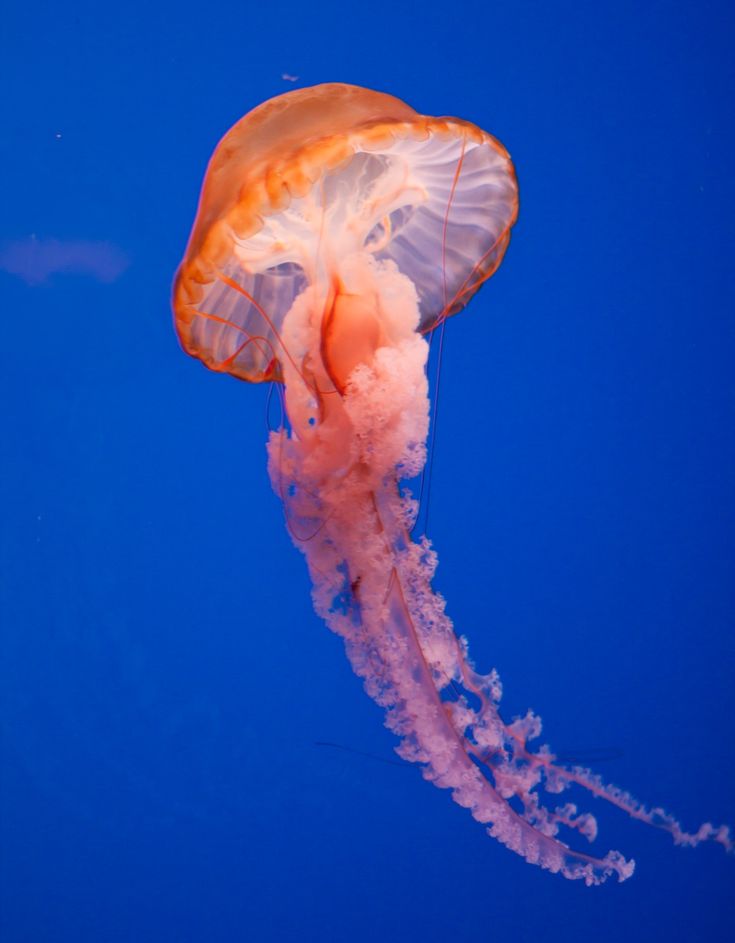
Finally, the high command of the Armed Forces of Ukraine also added problems to the defenders. This can be seen from the fact that during most of the battle for Bakhmut, Russian mercenaries had a numerical superiority. Under these conditions, Kyiv could:
- transfer significant reserves to the threatened sector of the front, equalize the balance of forces and try to seize the initiative;
- or withdraw the troops defending Bakhmut from under attack - to more reliable positions (that is, retreat).
So far, Kyiv has not made a clear choice in favor of one of these options: in any case, the troops deployed under Bakhmut have not been enough so far. Probably, some decision will have to be made, but in worse conditions than, for example, a month ago.
Why is the Russian army not trying to fight in the same way as PMCs?
Perhaps there is such a desire. Ukrainian sources published, as they say, copies of captured (their authenticity cannot be confirmed) instructions for the creation of assault groups in the regular Russian army.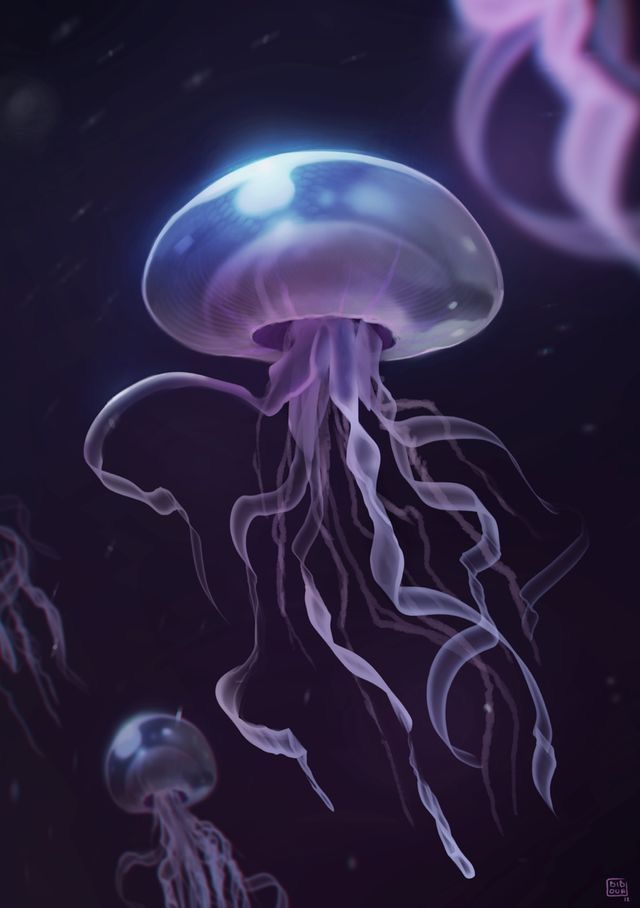 They differ from the Wagner ones in that they are reinforced with armored vehicles. From such groups, assault battalions should be formed (again, reinforced with a variety of equipment).
They differ from the Wagner ones in that they are reinforced with armored vehicles. From such groups, assault battalions should be formed (again, reinforced with a variety of equipment).
Such assault units are already being created in many units of the Russian Armed Forces (under the name "Storm") and are even allegedly "successfully used" against the static Ukrainian defense in its weak points. However, it will be difficult to repeat the experience of PMC Wagner for the Russian army. The units in which assault squads are created are very heterogeneous: reconnaissance equipment and secure communications systems in many of them are chronically lacking, and the command is not inclined to be flexible.
In addition, it will probably be much more difficult for Russian society to come to terms if the mobilized begin to die on the same scale as PMC attack aircraft (there are numerous videos showing the destruction of entire assault groups). Most likely, the authorities will try to avoid such a test.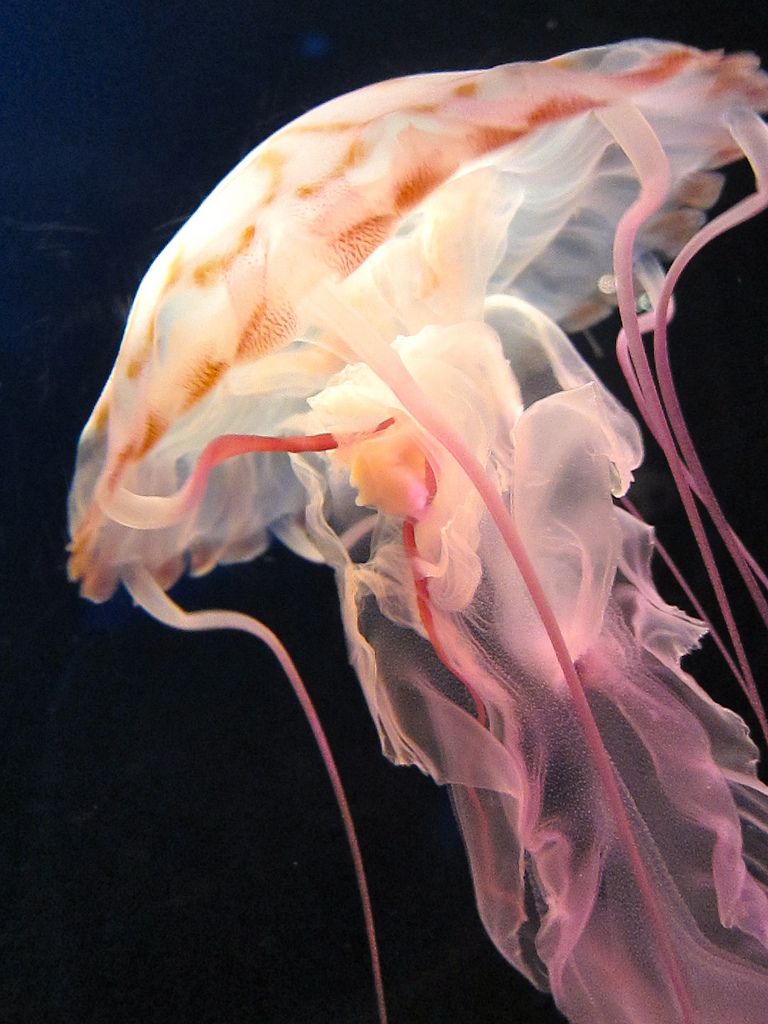
Finally, the future of the PMC itself looks bleak. Apparently, Yevgeny Prigozhin entered into a conflict with the Russian Ministry of Defense, which he has been regularly accusing since February 2022 of refusing to supply the amount of ammunition he needs. In particular, according to him, this makes it difficult to capture Bakhmut and leads to unnecessary casualties among the mercenaries. In turn, the military department calls these accusations "exalted statements" - and claims that the requests of "volunteer detachments in 2022 were executed by 140%."
At the same time, according to Prigozhin, he can no longer recruit prisoners, and therefore PMCs will have to “shrink” (that only the military can now recruit in colonies, wrote human rights activist Olga Romanova, who has been providing systemic assistance to prisoners for many years) . The PMC plans to partially replace convicts who are trying to get a chance for release through participation in the war with "free" mercenaries.